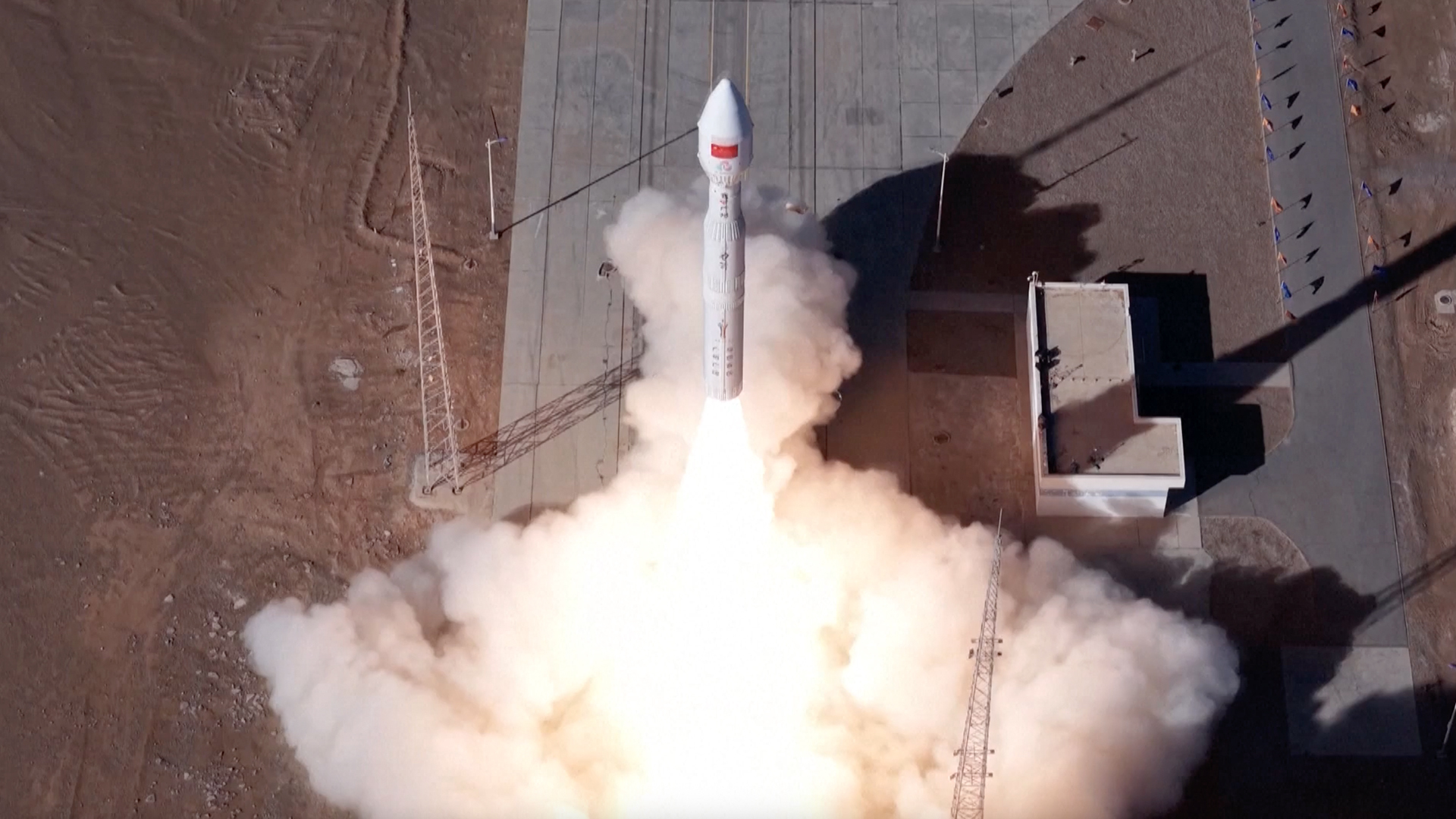In photos: SpaceX's amazing Crew Dragon in-flight abort test launch
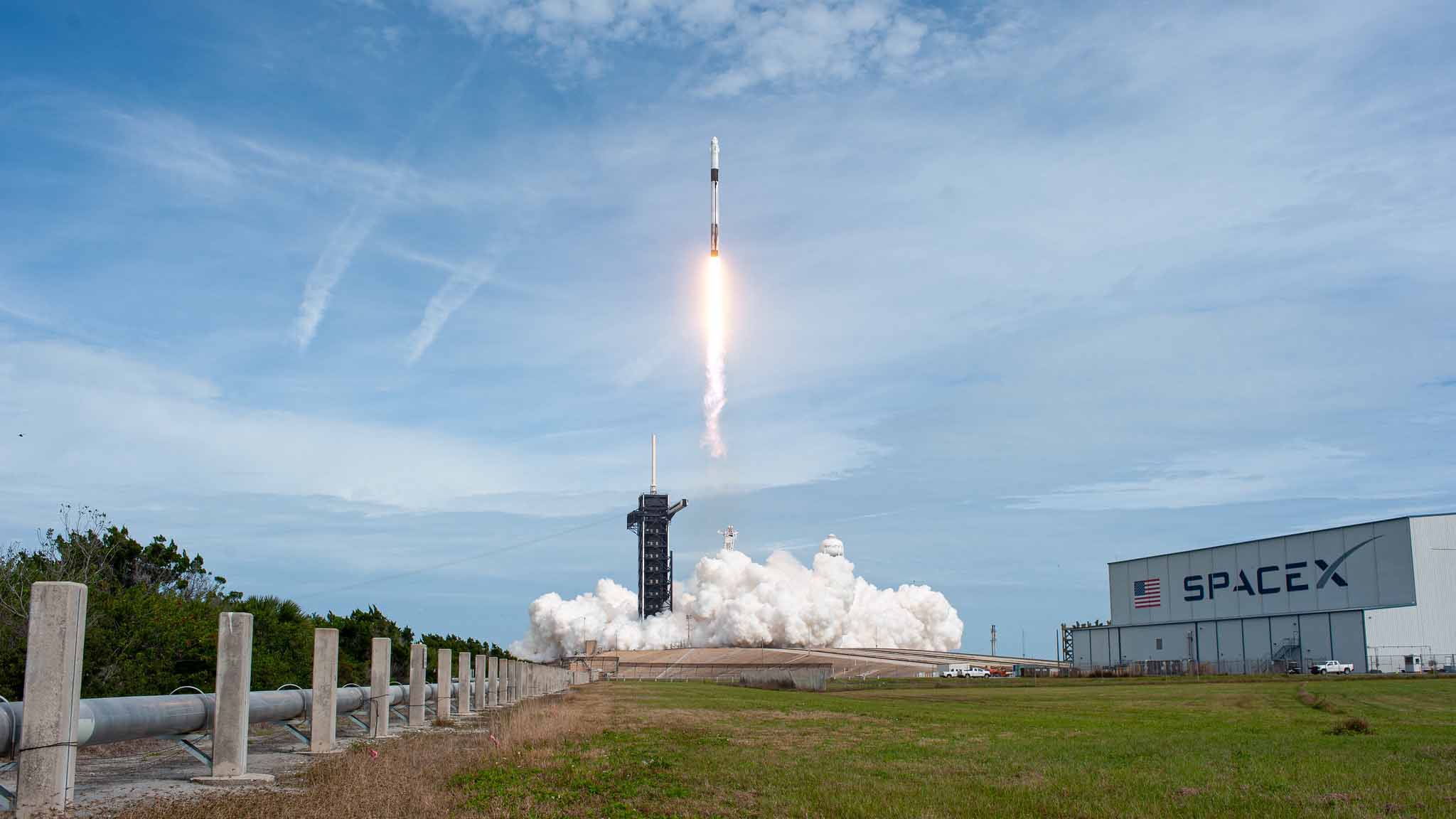
SpaceX successfully conducted an in-flight abort test of its Crew Dragon crew capsule on Sunday (Jan. 19) to test the emergency escape system, which would safely return astronauts to Earth in the event of a problem during launch. See photos of the test here!
Read the full story: SpaceX aces Crew Dragon launch abort test, destroys rocket on purpose

During the in-flight abort test, the Crew Dragon fired its built-in SuperDraco thrusters to separate from the Falcon 9 rocket, as seen in this illustration. After the separation, the Falcon 9 rocket was destroyed.
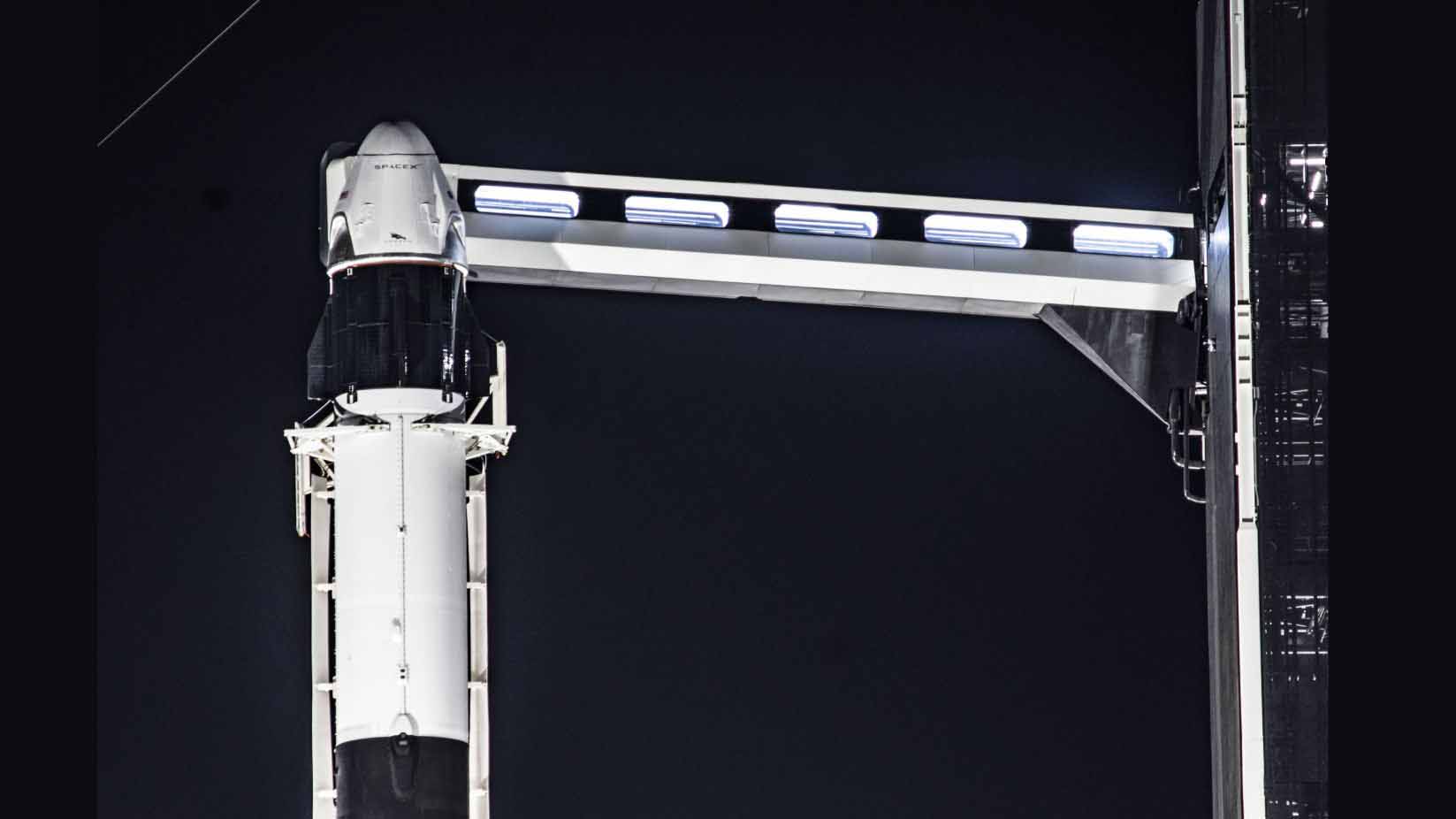
SpaceX's Crew Dragon capsule is perched on a Falcon 9 rocket in preparation for an in-flight abort test on Jan. 18, 2020.
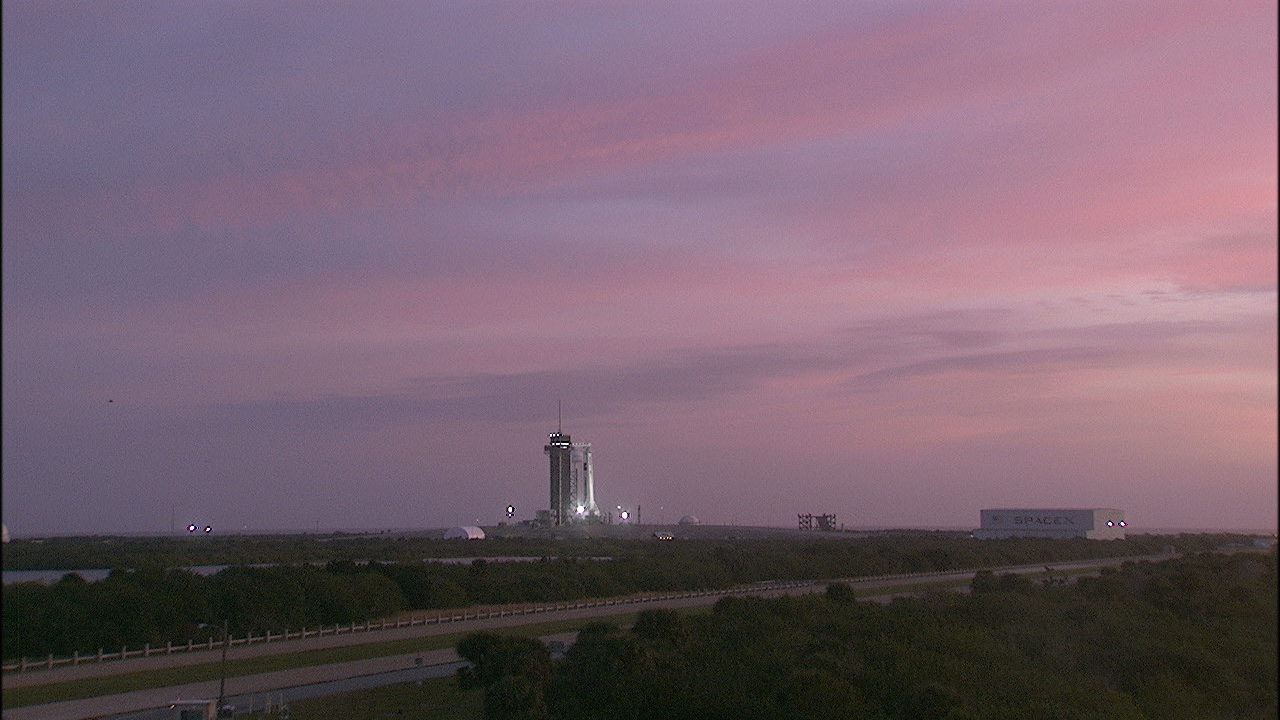
The Falcon 9 rocket and Crew Dragon spacecraft stand ready for launch on Pad 39A at NASA's Kennedy Space Center in Florida.
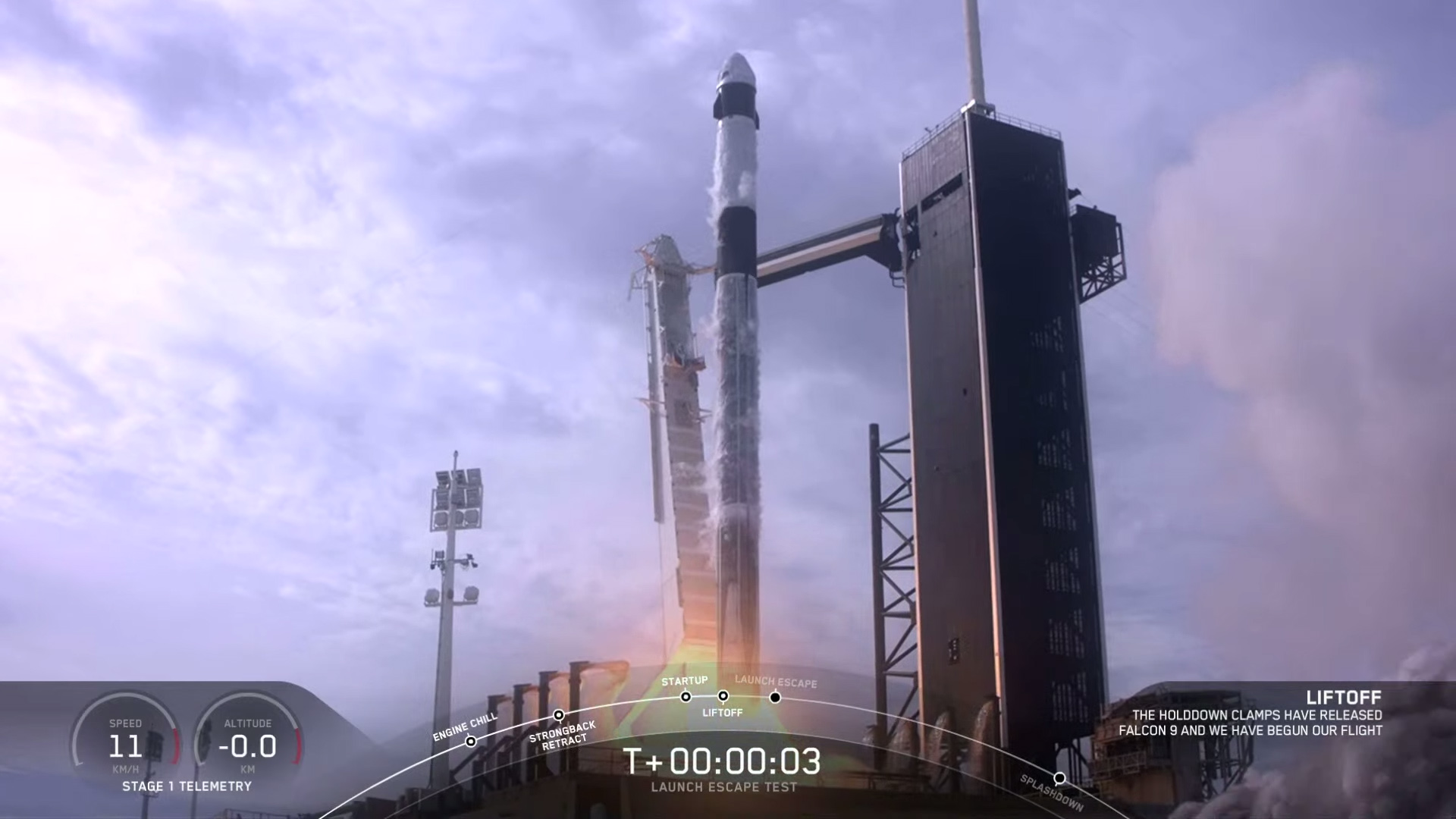
SpaceX's Falcon 9 rocket and Crew Dragon lift off from Pad 39A at NASA's Kennedy Space Center in Florida.
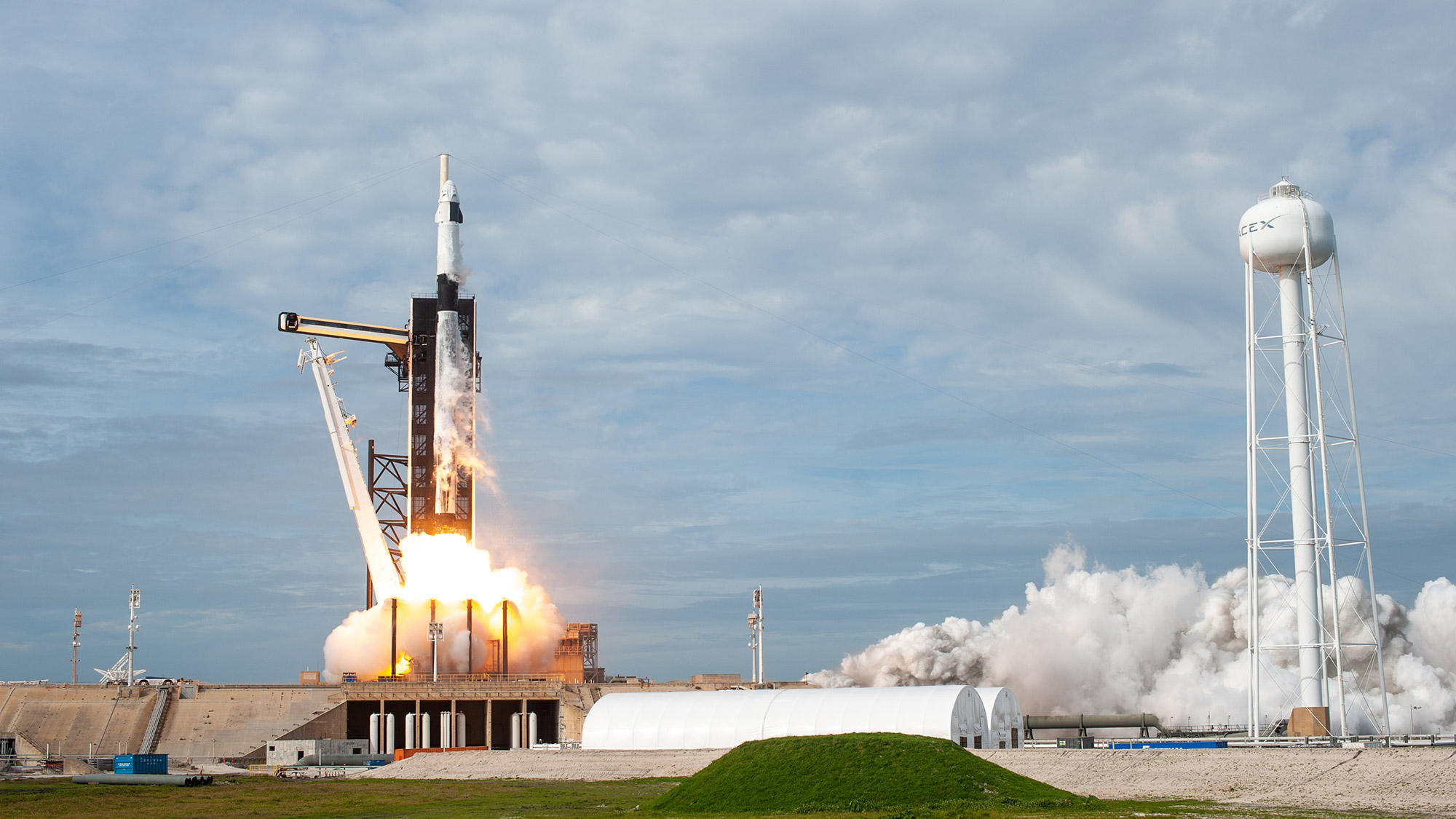
A SpaceX Falcon 9 rocket launches the Crew Dragon spacecraft on a major abort system test on Jan. 19, 2020 from Pad 39A of NASA's Kennedy Space Center in Cape Canaveral, Florida.
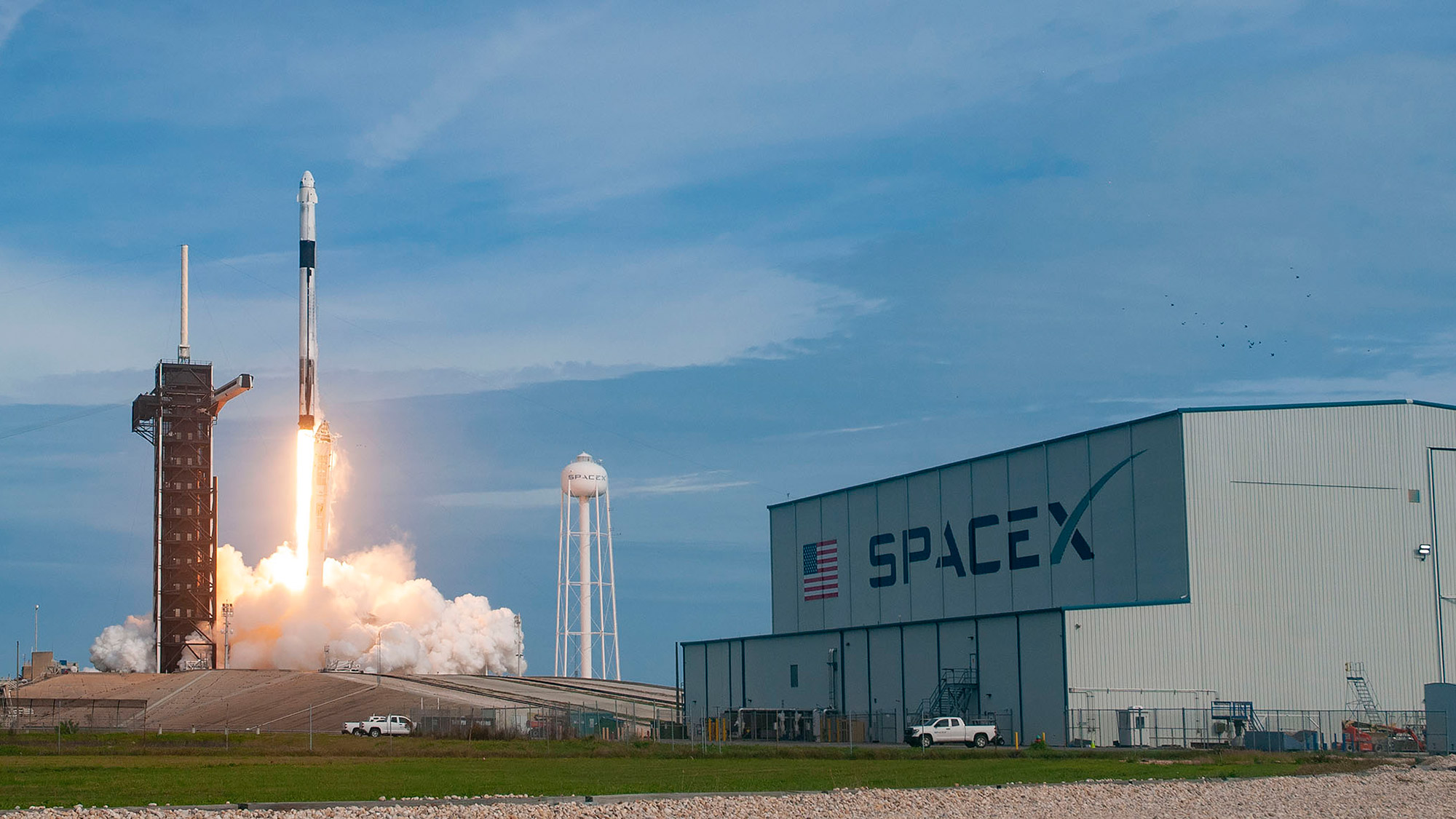
The Falcon 9 rocket rises behind a SpaceX facility at NASA's Kennedy Space Center in this view from the launch of Crew Dragon's in-flight abort test.
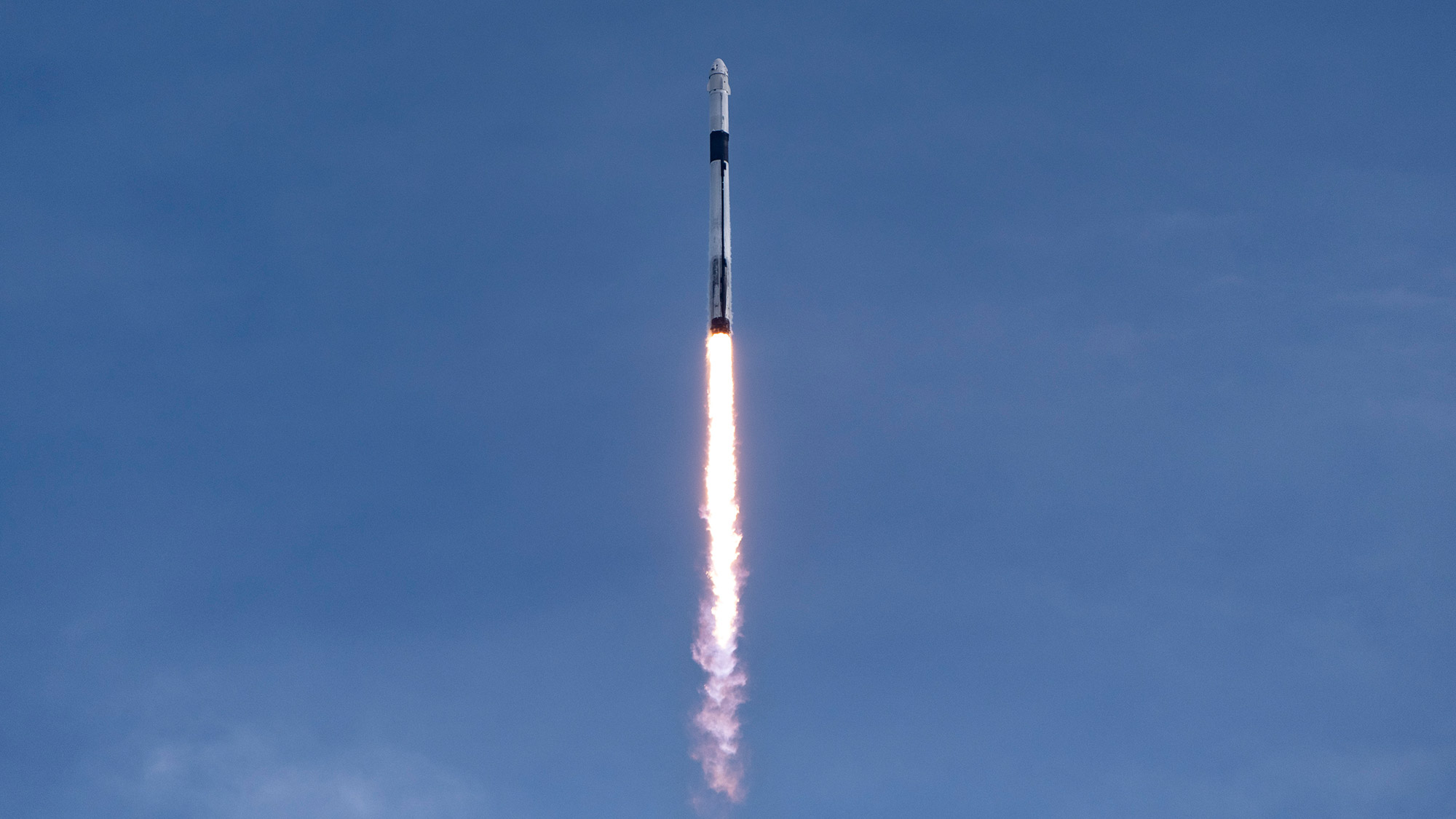
SpaceX's Falcon 9 rocket and Crew Dragon capsule are on their way to space.
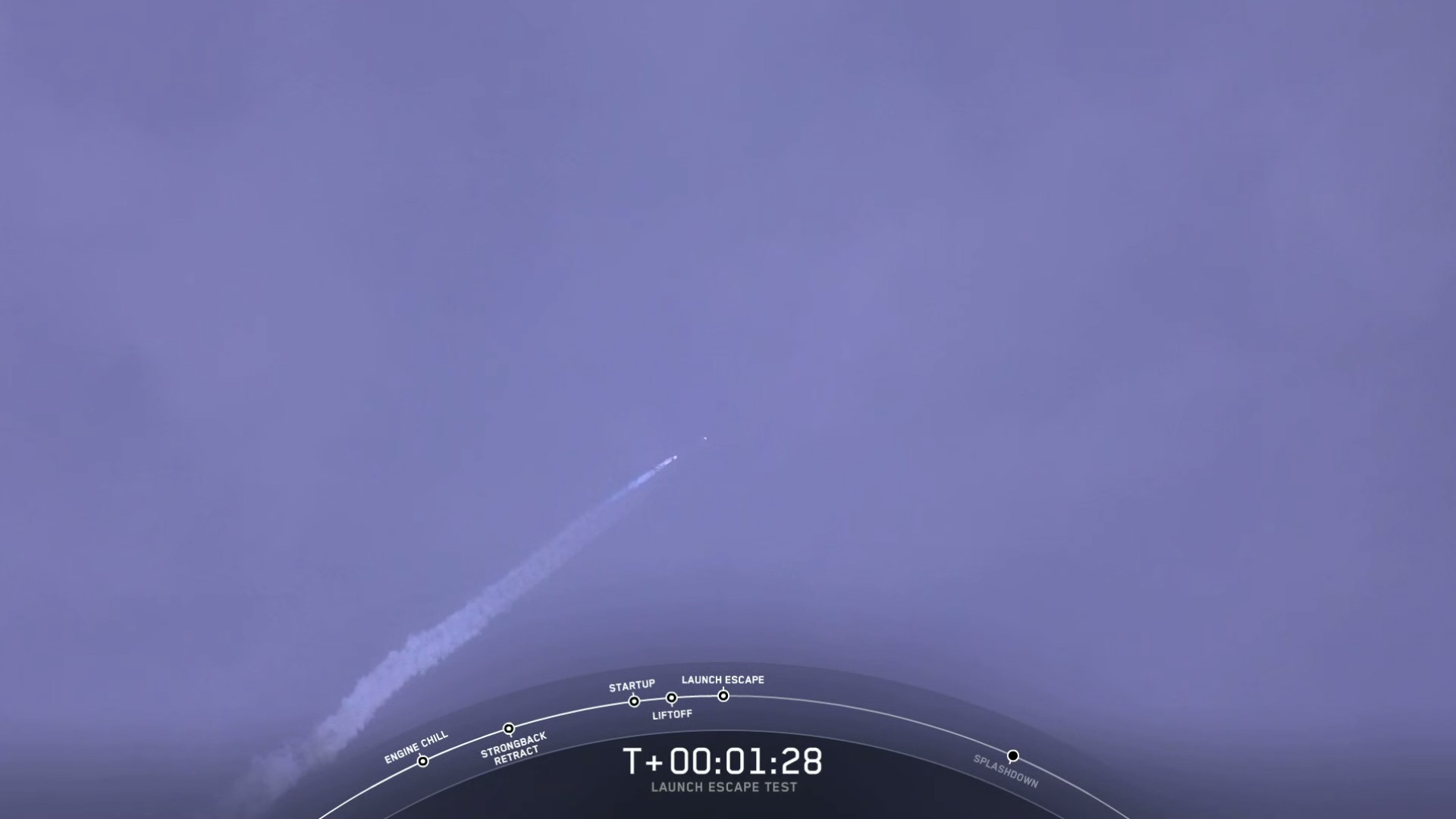
Here, SpaceX's Crew Dragon can be seen just after igniting its abort engine burn. Eight SuperDraco engines fired to rip the spacecraft free of its Falcon 9 rocket.
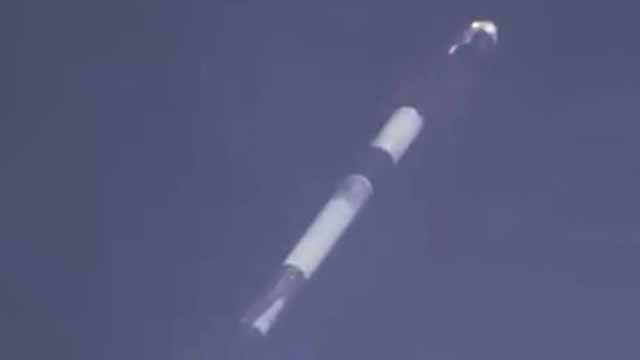
The moment of separation as Crew Dragon fires its SuperDracos to separate from its Falcon 9 rocket during a successful in-flight abort test launched from NASA's Kennedy Space Center in Florida on Jan. 19, 2020.
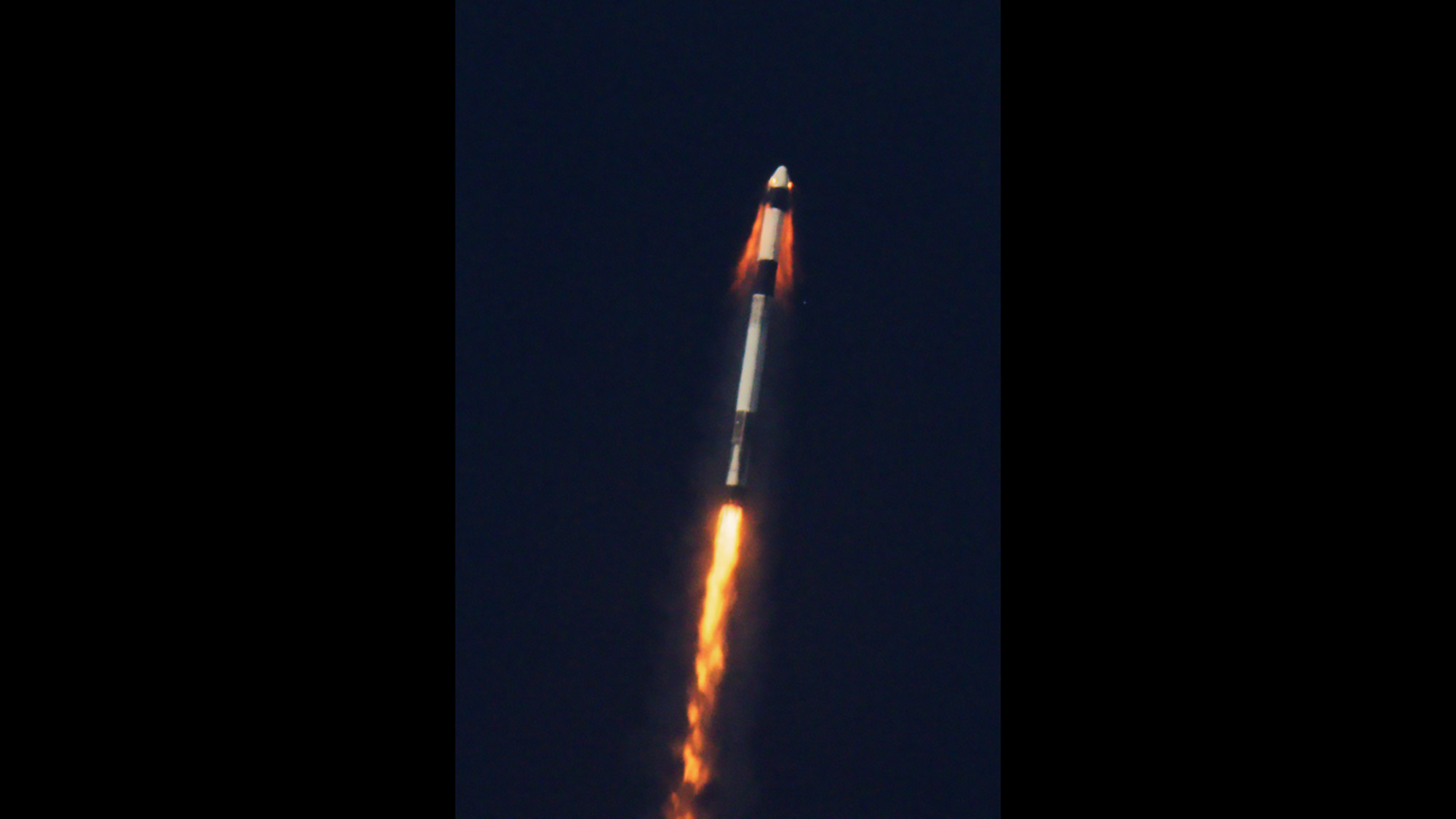
SpaceX's in-flight abort test heats up.
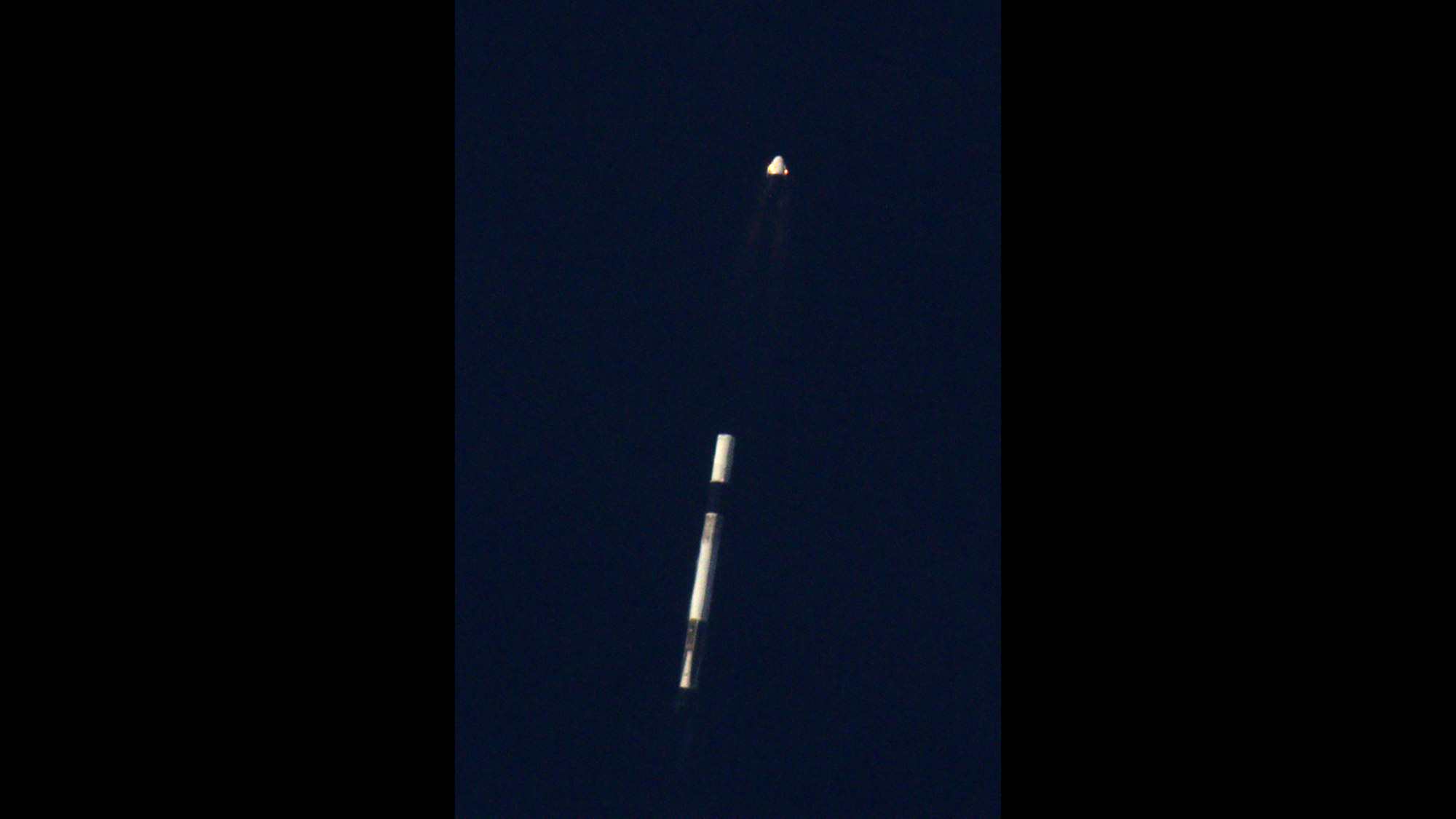
SpaceX's Crew Dragon capsule separates from the Falcon 9 rocket, which was intentionally destroyed as part of the in-flight abort test.

The Falcon 9 rocket, fully fueled for launch, appears to explode and break apart after Crew Dragon's abort maneuver. This was expected and SpaceX warned viewers to expect the rocket's fiery fate.
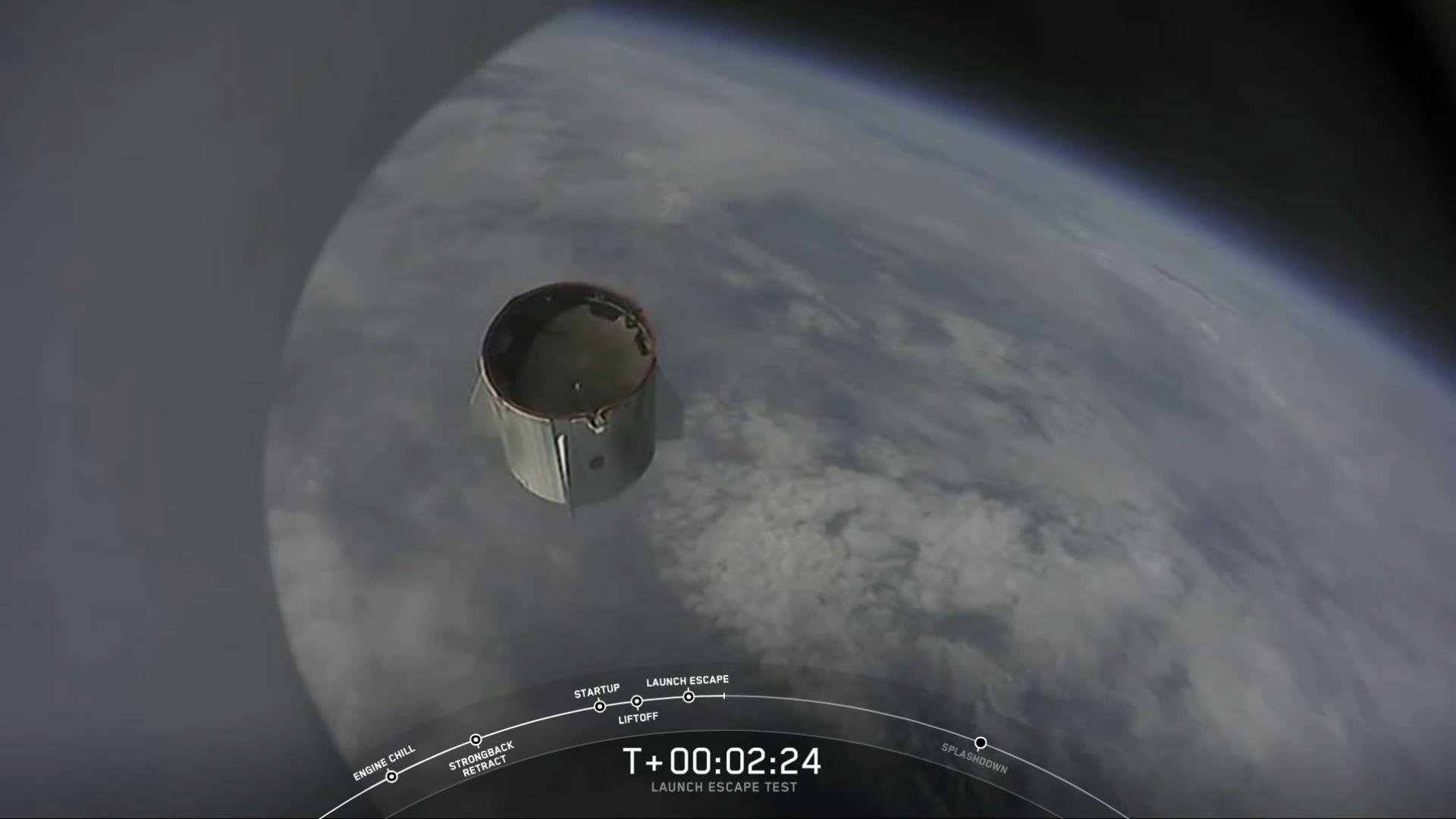
Crew Dragon's "trunk" is seen here after separating from the crew capsule section. Crew Dragon was expected to reach a maximum altitude of about 25 miles (40 kilometers) during the launch.
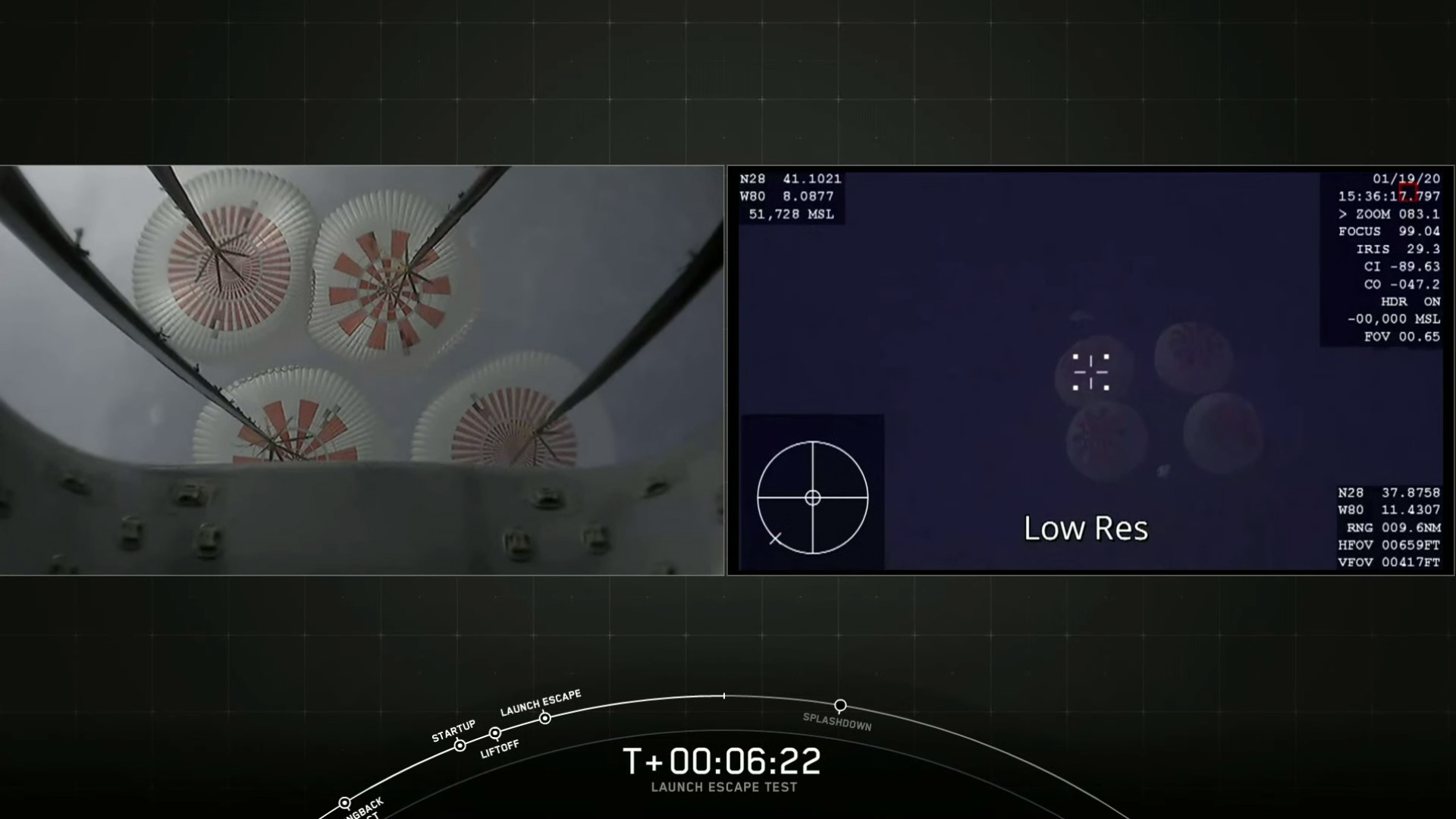
The four Mark 3 main parachutes deploy to slow Crew Dragon during its descent back to Earth. The spacecraft splashed down in the Atlantic Ocean about 20 miles (32 kilometers) east of the launch site.

SpaceX's Crew Dragon spacecraft sits on the recovery ship GO Searcher just minutes after being pulled from the Atlantic Ocean after a critical in-flight abort test on Jan. 19, 2020.
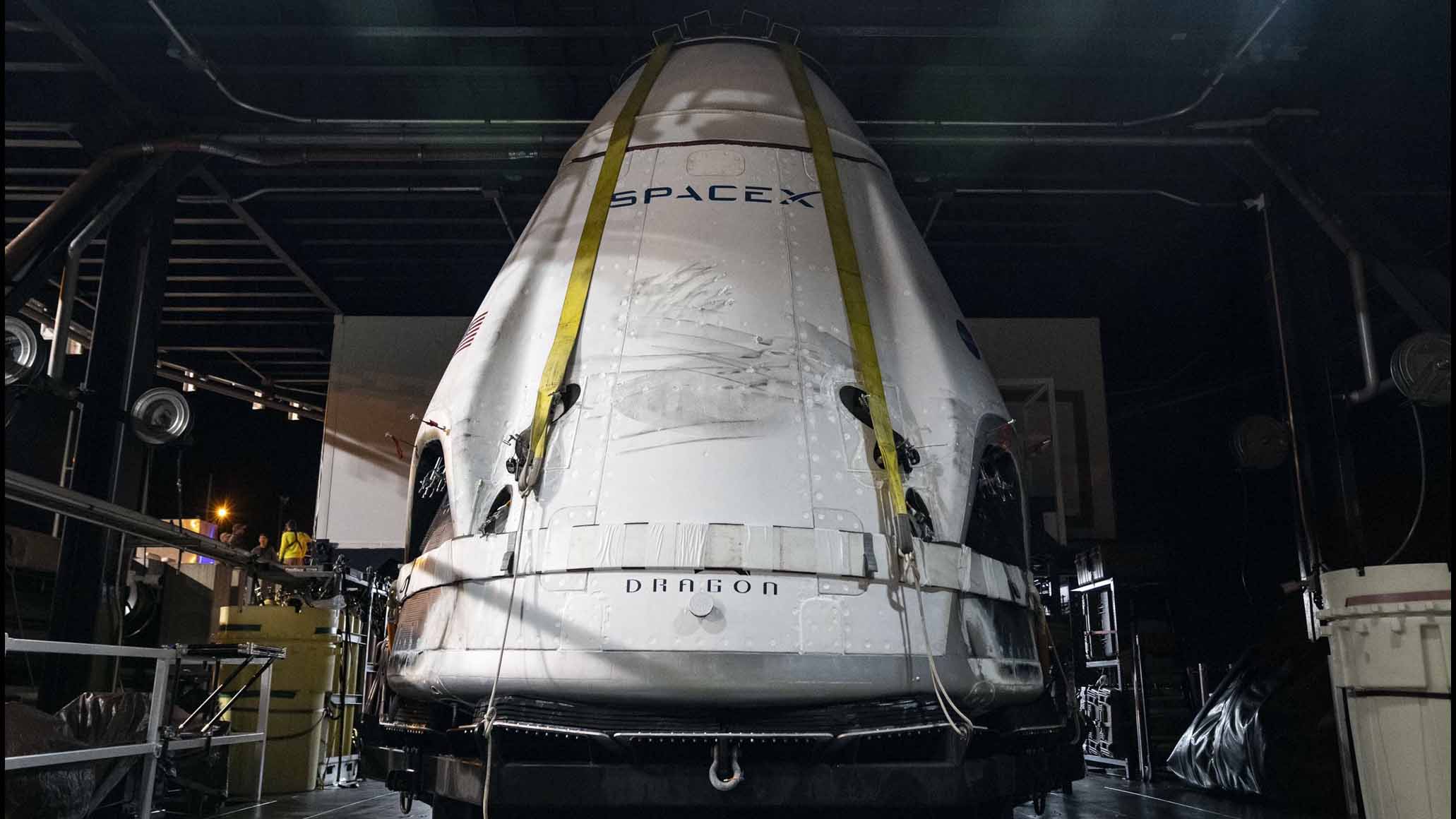
SpaceX’s Crew Dragon capsule safely returned to Port Canaveral on Sunday (Jan. 19), after a successful test of its launch escape system.
Full Story: SpaceX's Crew Dragon returns to shore after successful abort test
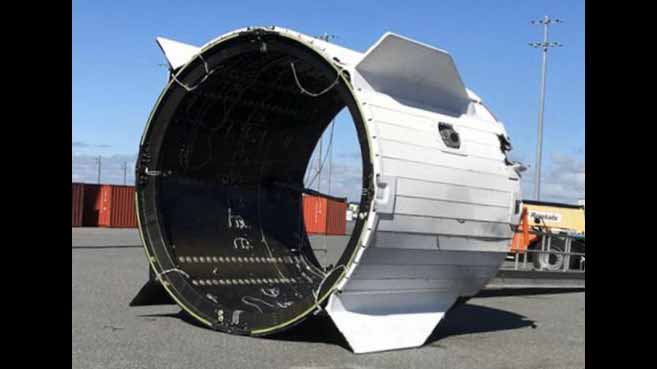
The Dragon’s trunk surprisingly landed in the water in tact after being jettisoned during the launch abort test.
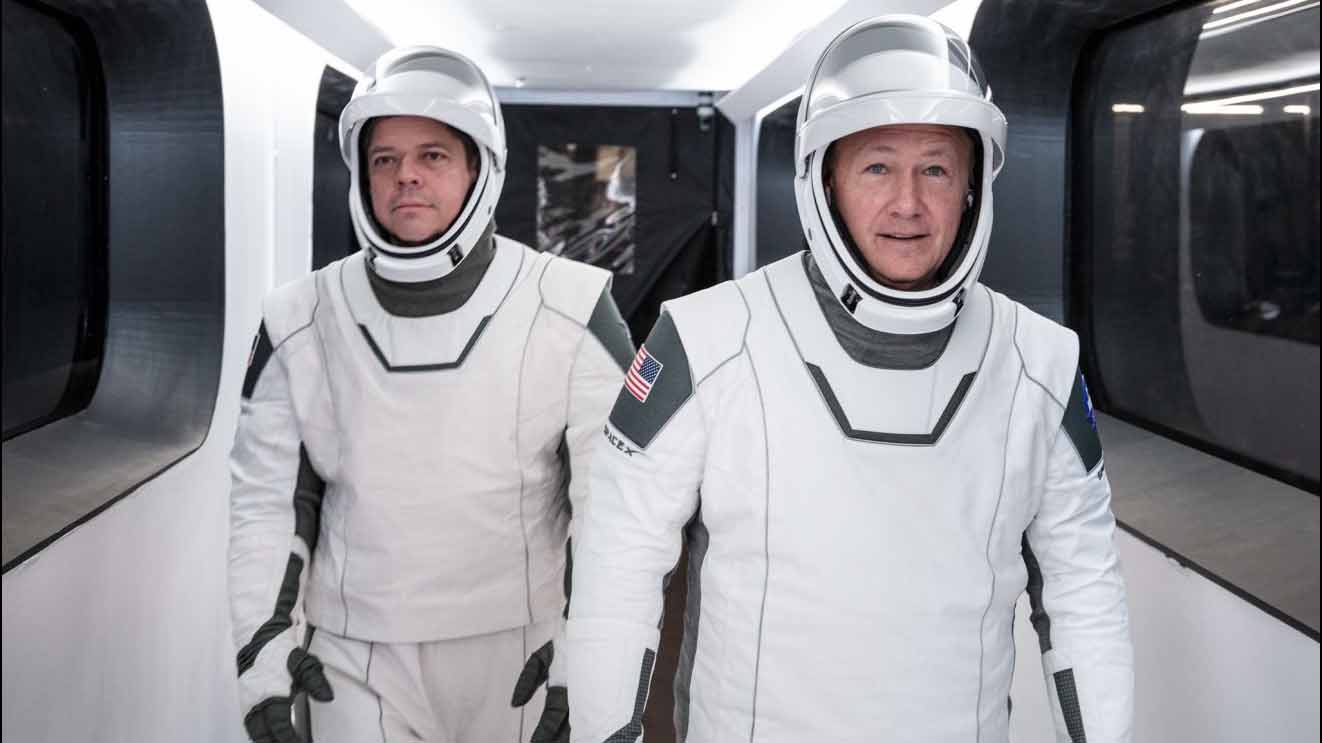
NASA astronauts Bob Behknen (left) and Doug Hurley will be the first to fly on SpaceX's Crew Dragon spacecraft during the Demo-2 mission. It could launch in Spring 2020. Here, they walk through the access arm in a dress rehearsal for launch during SpaceX in-flight abort preparations.
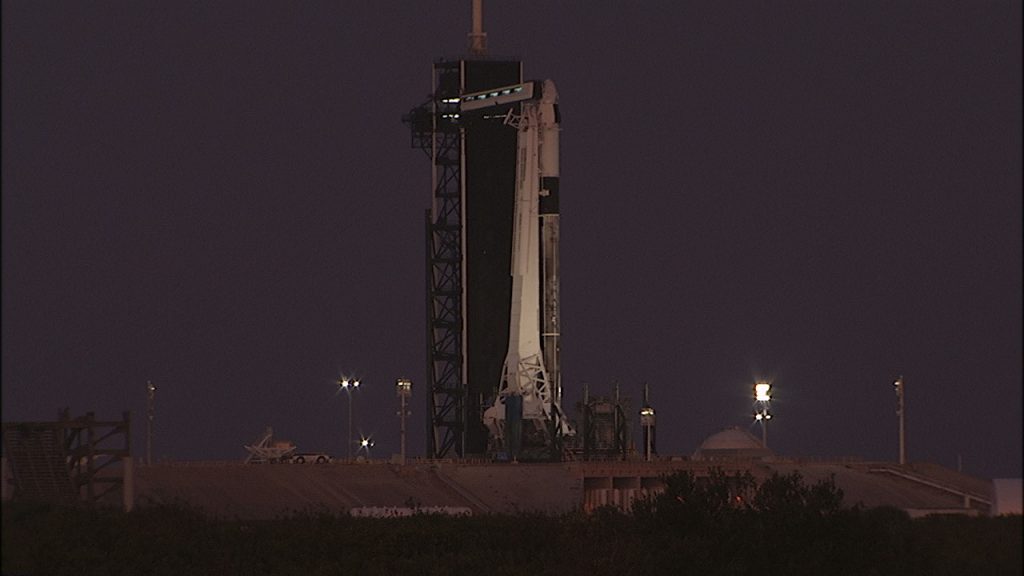
The Falcon 9 rocket and Crew Dragon spacecraft stand ready for launch on Pad 39A at NASA's Kennedy Space Center in Florida.
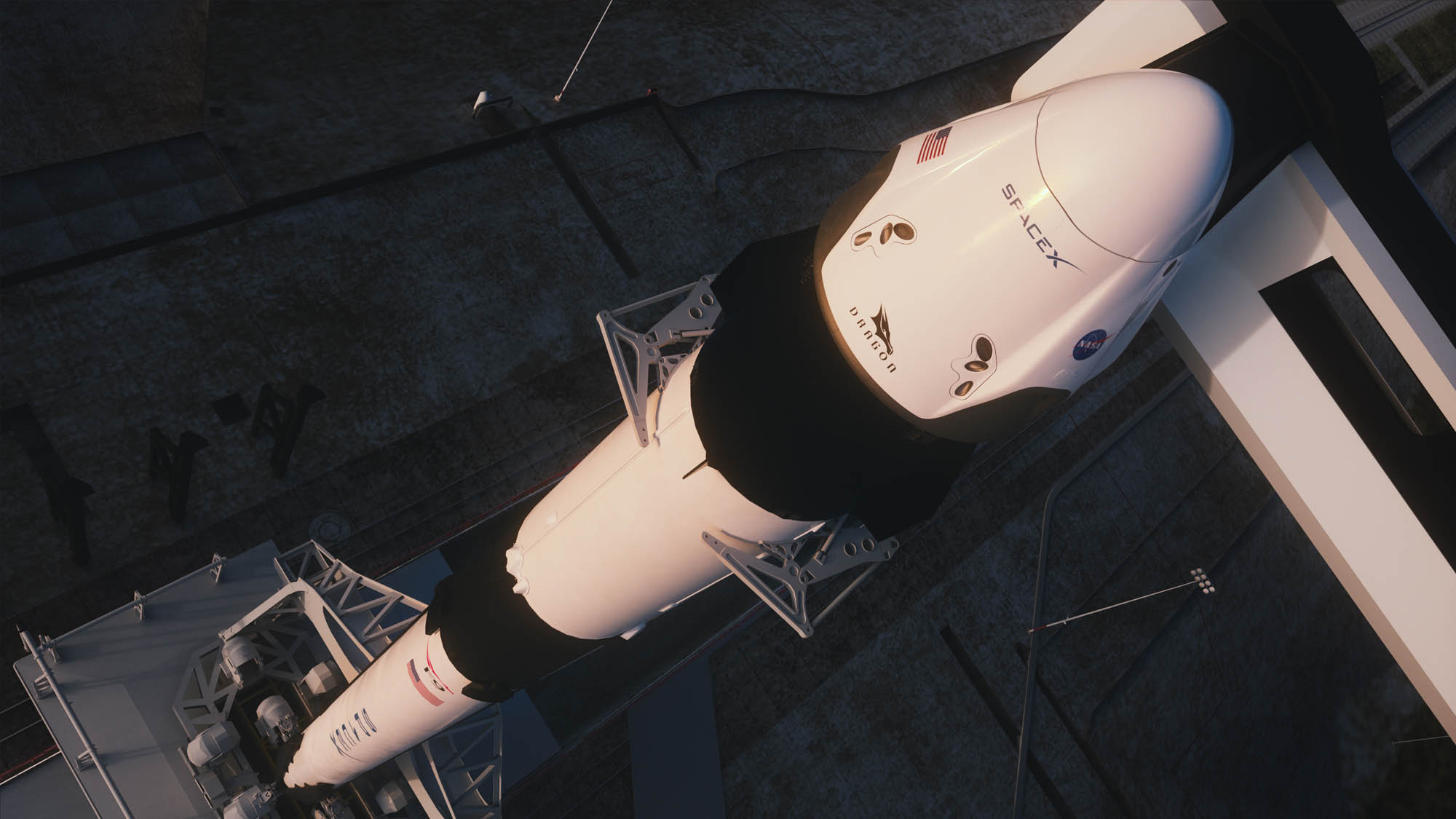
An artist's illustration of the Crew Dragon and Falcon 9 rocket on the launch pad.
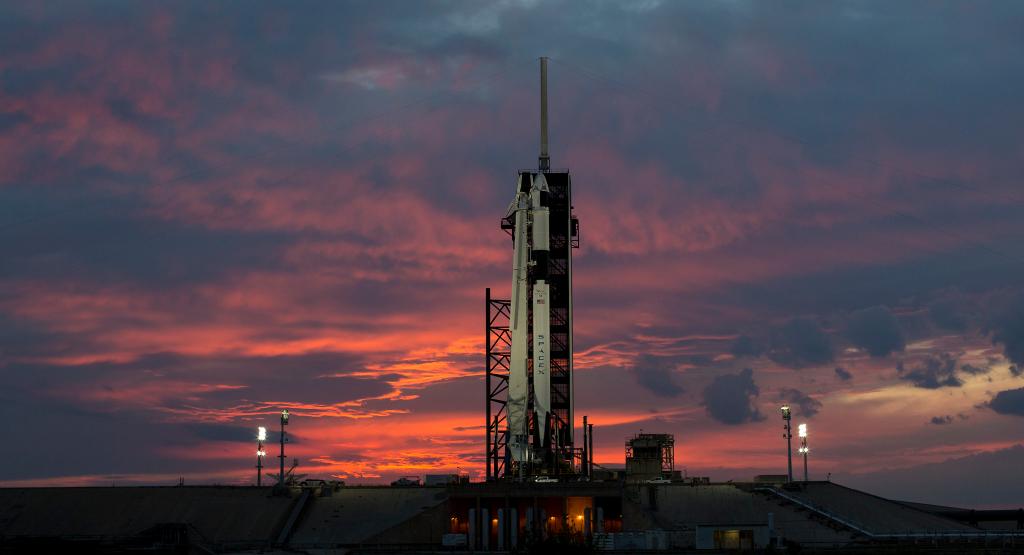
The Falcon 9 rocket and Crew Dragon spacecraft stand ready for launch on Pad 39A at NASA's Kennedy Space Center in Florida.
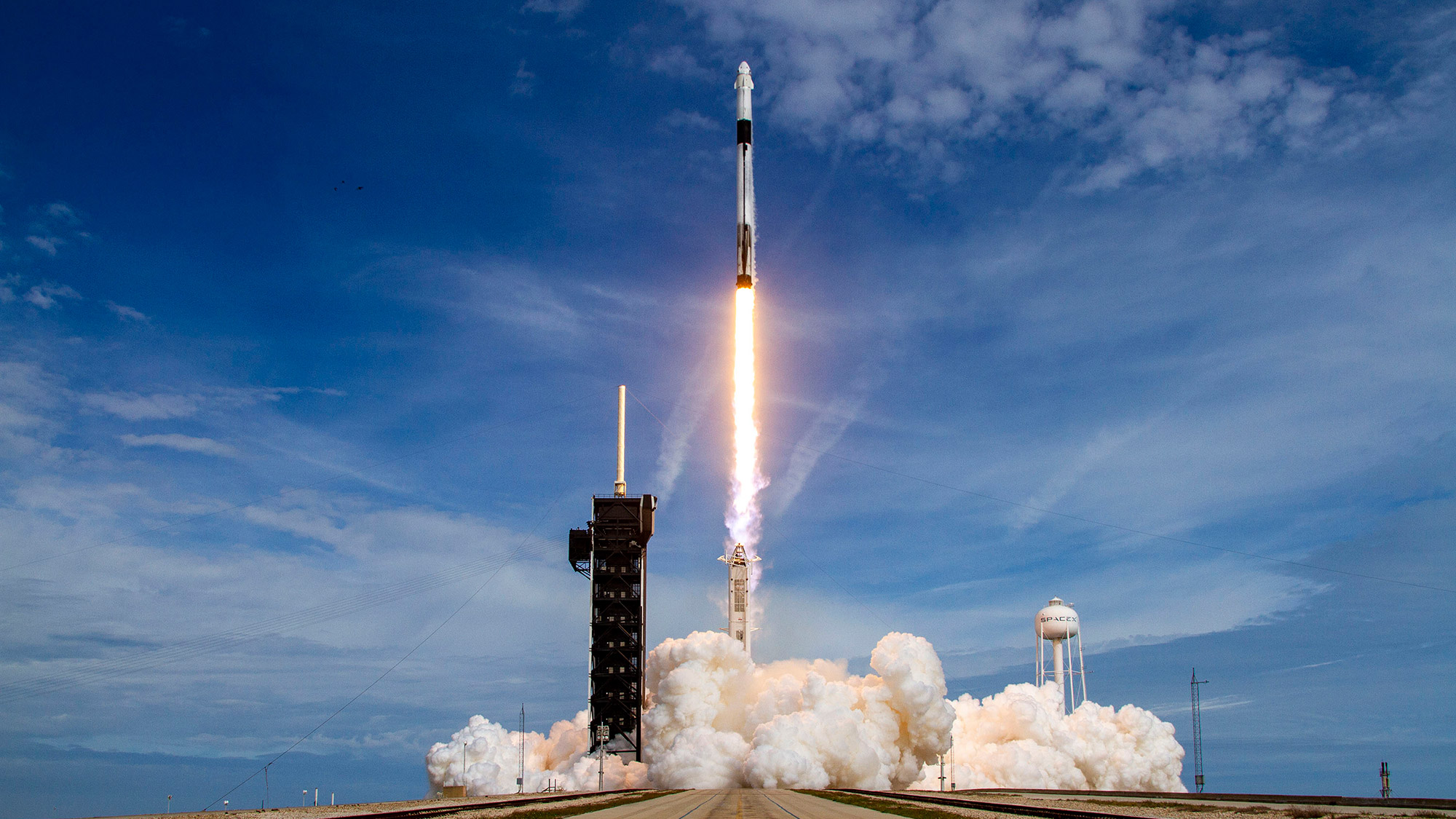
The Falcon 9 rocket, topped with the uncrewed Crew Dragon spacecraft, lifted off from NASA's Kennedy Space Center in Florida on Jan. 19 at 10:30 a.m. EST (1530 GMT).
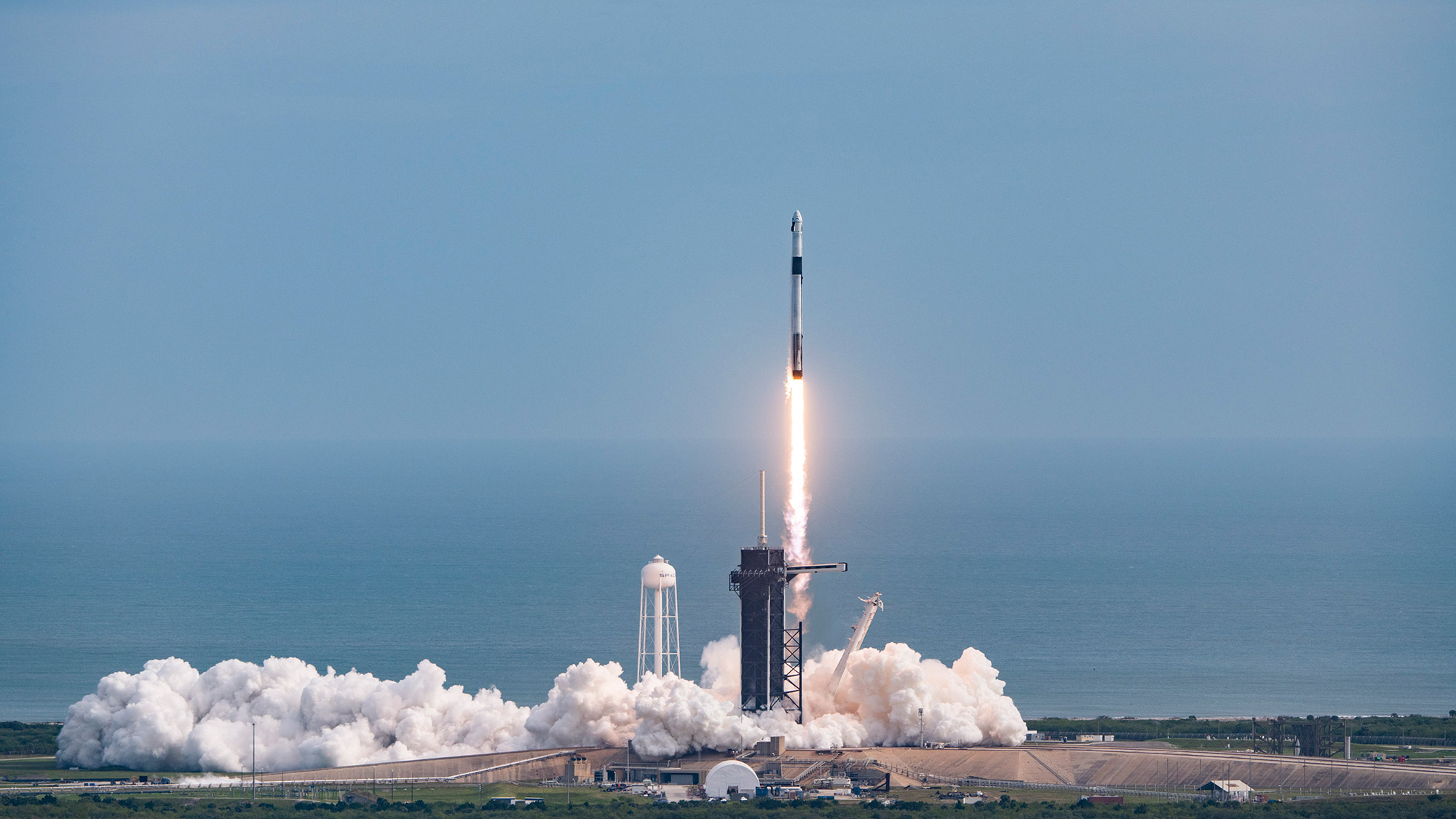
Smoke billows out from under SpaceX's Falcon 9 during its successful launch abort test on Jan. 19, 2020.
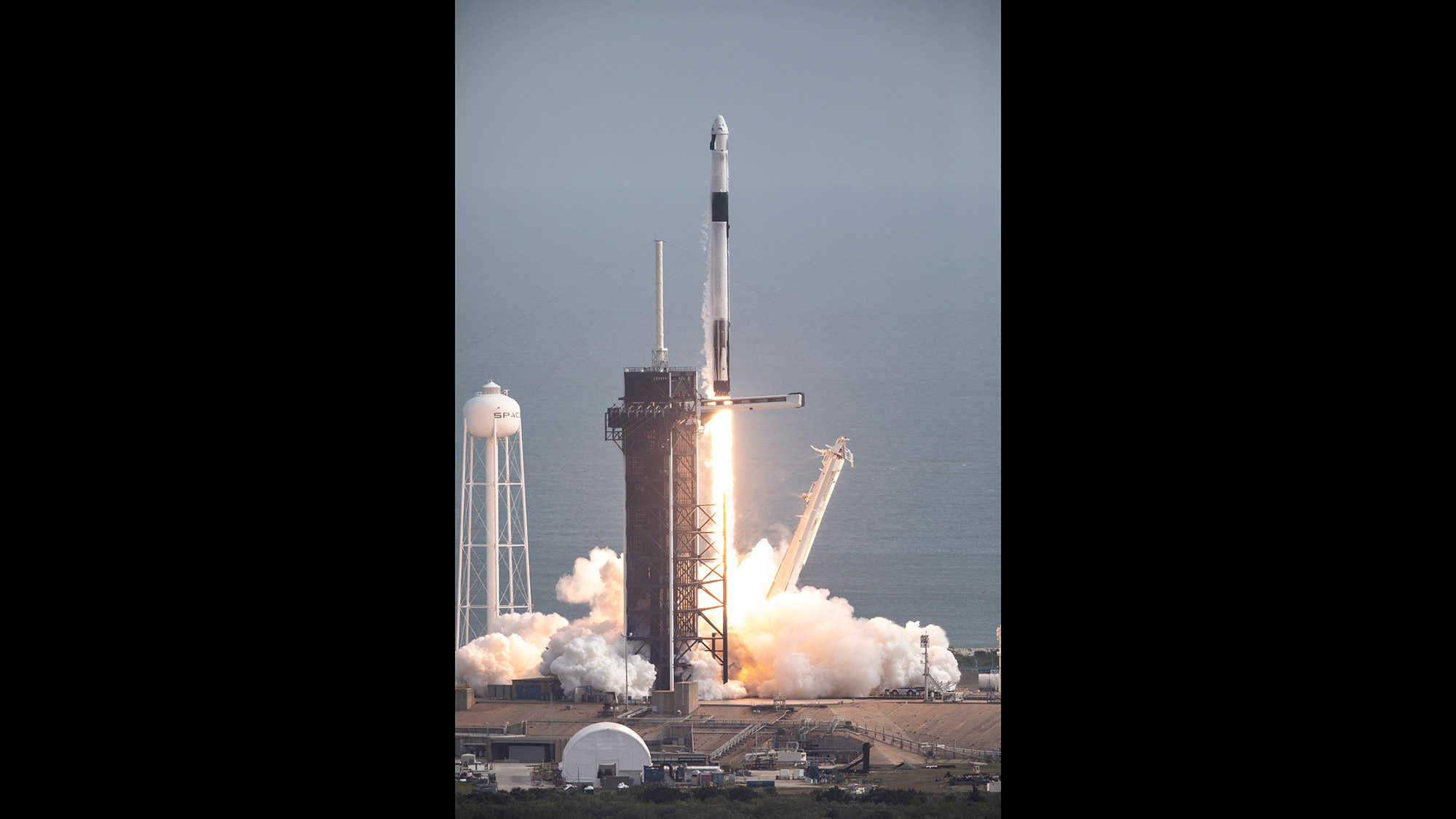
A SpaceX Falcon 9 rocket launches the Crew Dragon spacecraft on a major abort system test on Jan. 19, 2020 from Pad 39A of NASA's Kennedy Space Center in Cape Canaveral, Florida.
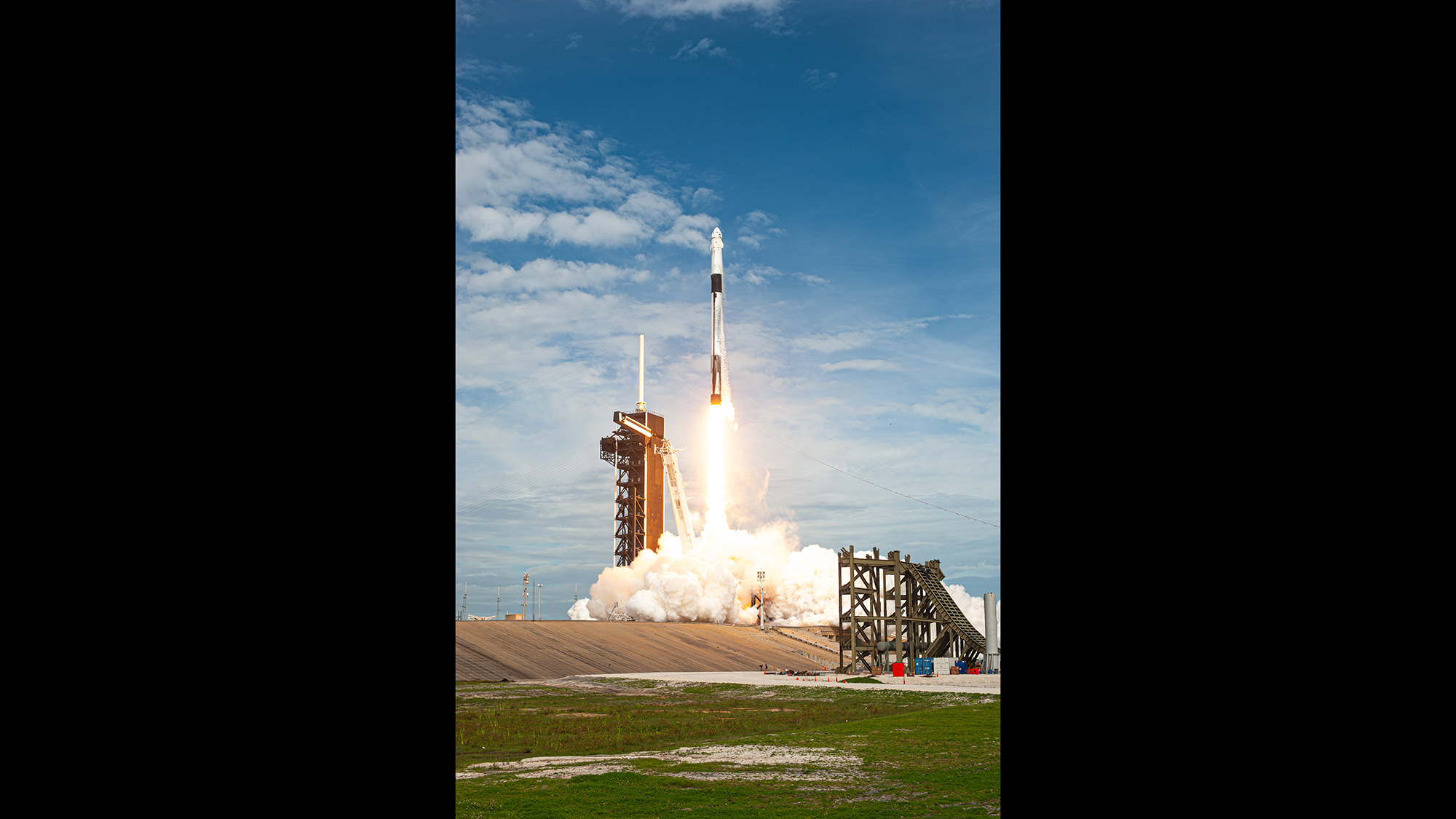
A SpaceX Falcon 9 rocket launches the Crew Dragon spacecraft on a major abort system test on Jan. 19, 2020 from Pad 39A of NASA's Kennedy Space Center in Cape Canaveral, Florida.
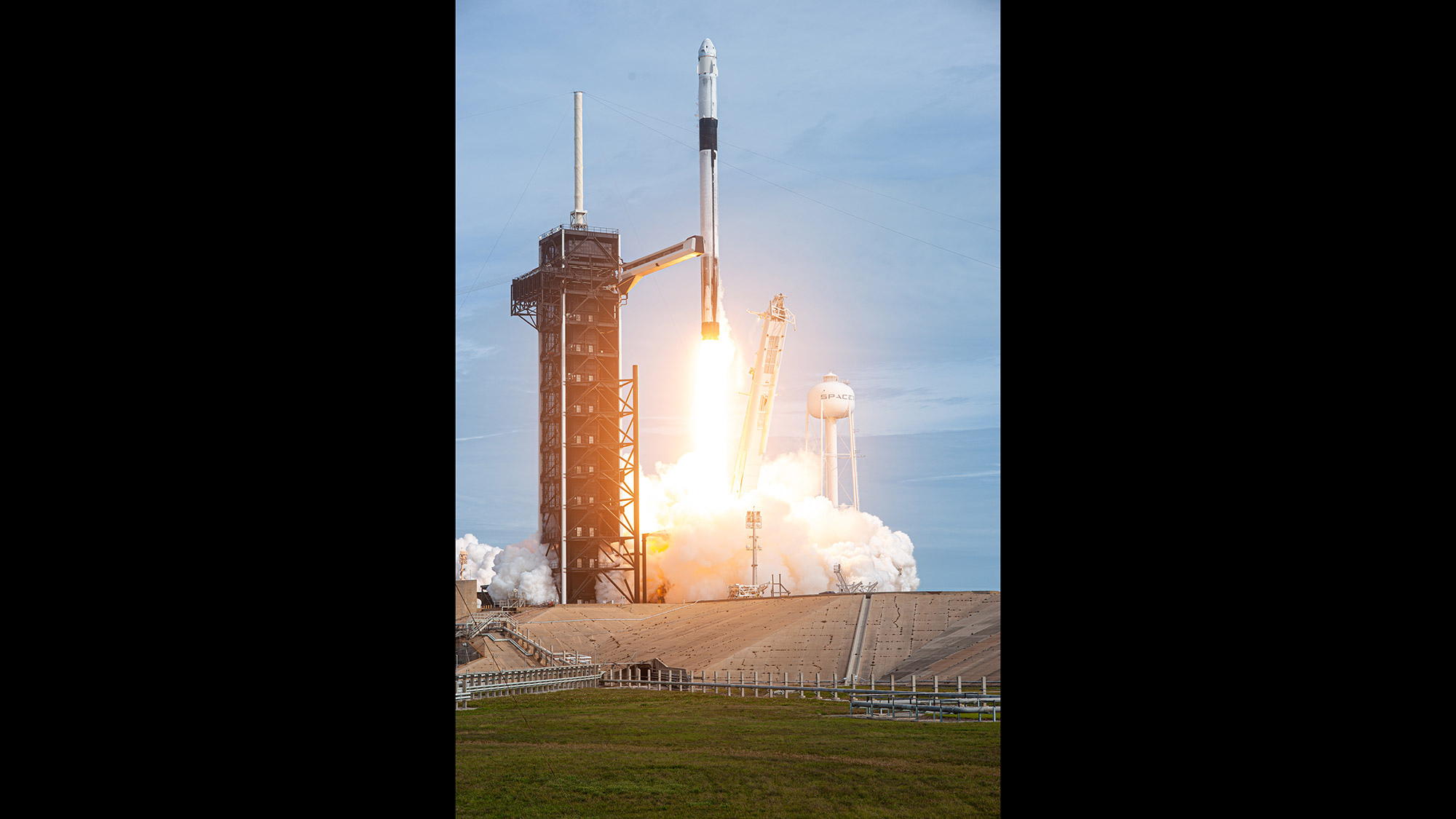
A SpaceX Falcon 9 rocket launches the Crew Dragon spacecraft on a major abort system test on Jan. 19, 2020 from Pad 39A of NASA's Kennedy Space Center in Cape Canaveral, Florida.
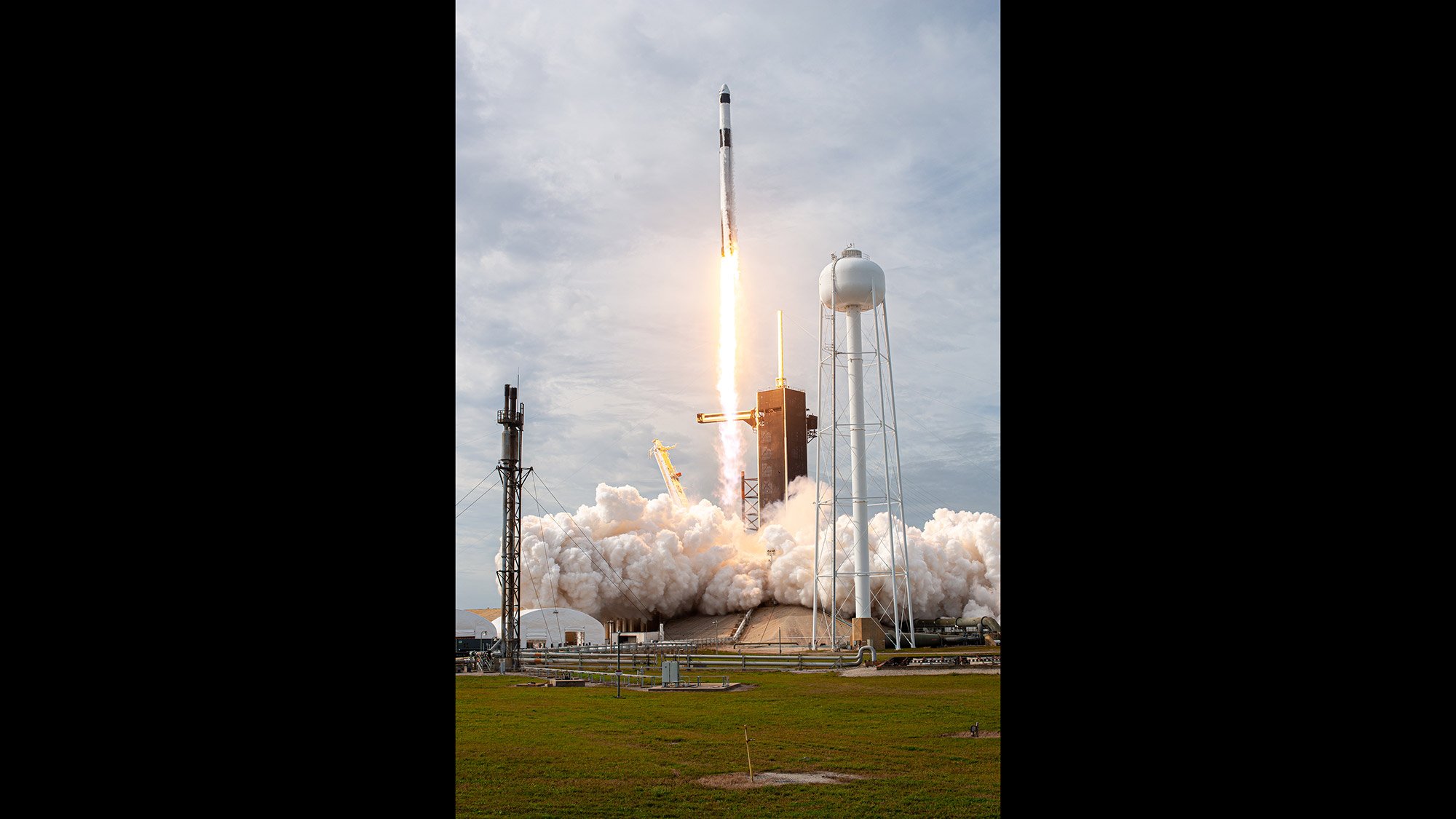
A SpaceX Falcon 9 rocket launches the Crew Dragon spacecraft on a major abort system test on Jan. 19, 2020 from Pad 39A of NASA's Kennedy Space Center in Cape Canaveral, Florida.
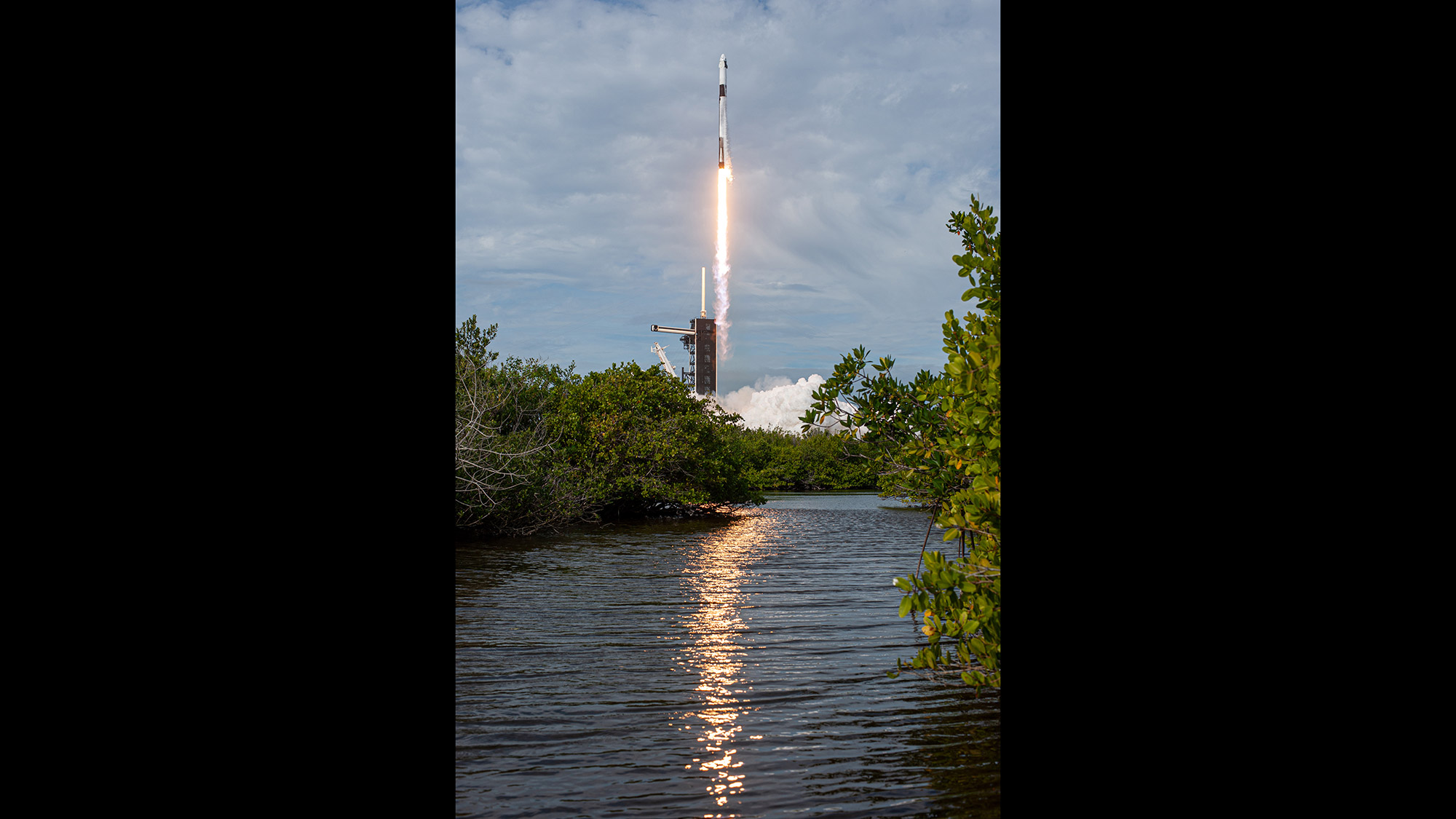
A SpaceX Falcon 9 rocket launches the Crew Dragon spacecraft on a major abort system test on Jan. 19, 2020 from Pad 39A of NASA's Kennedy Space Center in Cape Canaveral, Florida.
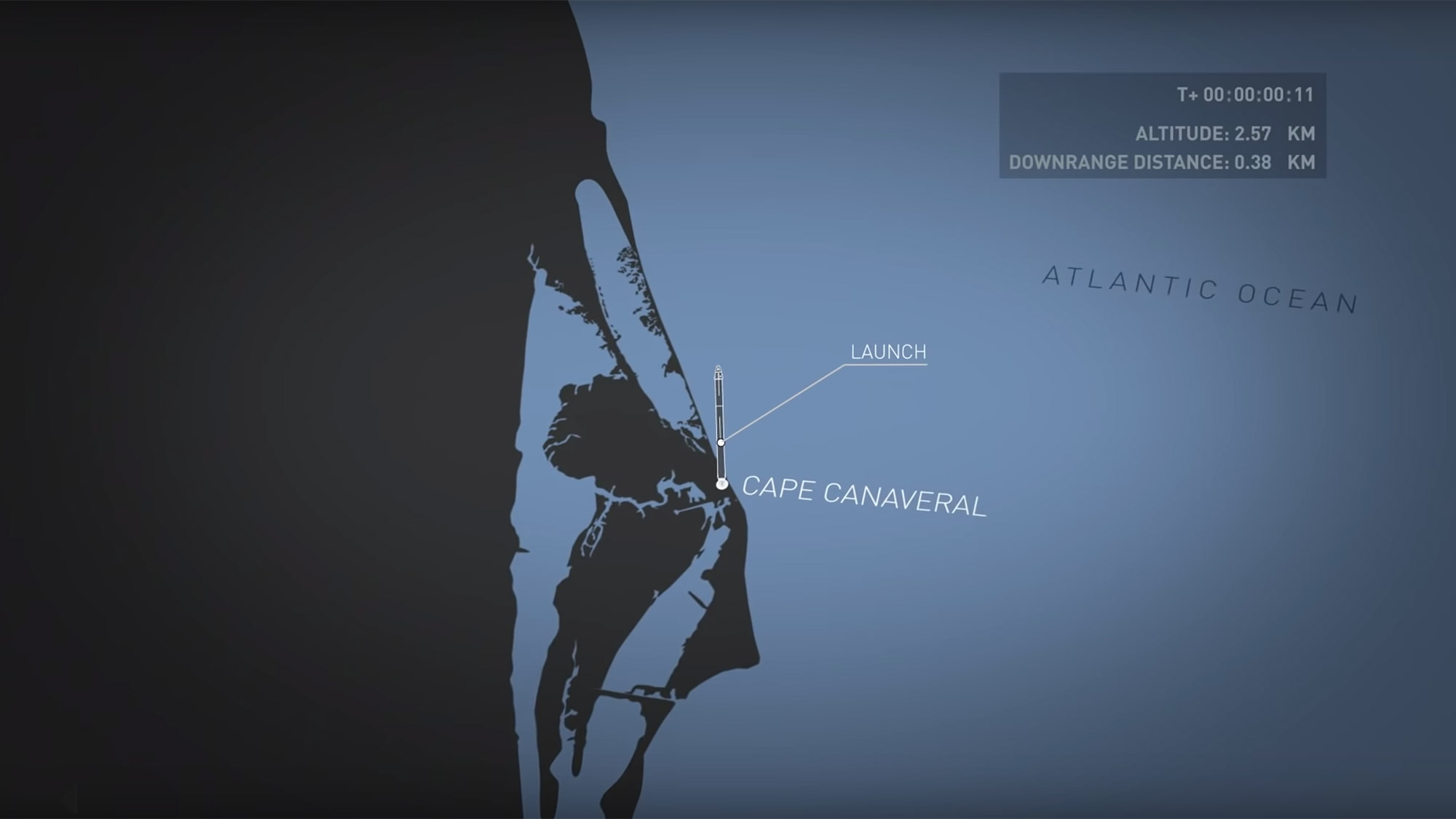
A screenshot from an animation of the Crew Dragon in-flight abort test shows the launch site in Cape Canaveral, Florida.
Related: How SpaceX's Crew Dragon launch abort test today works in 10 not-so-easy steps
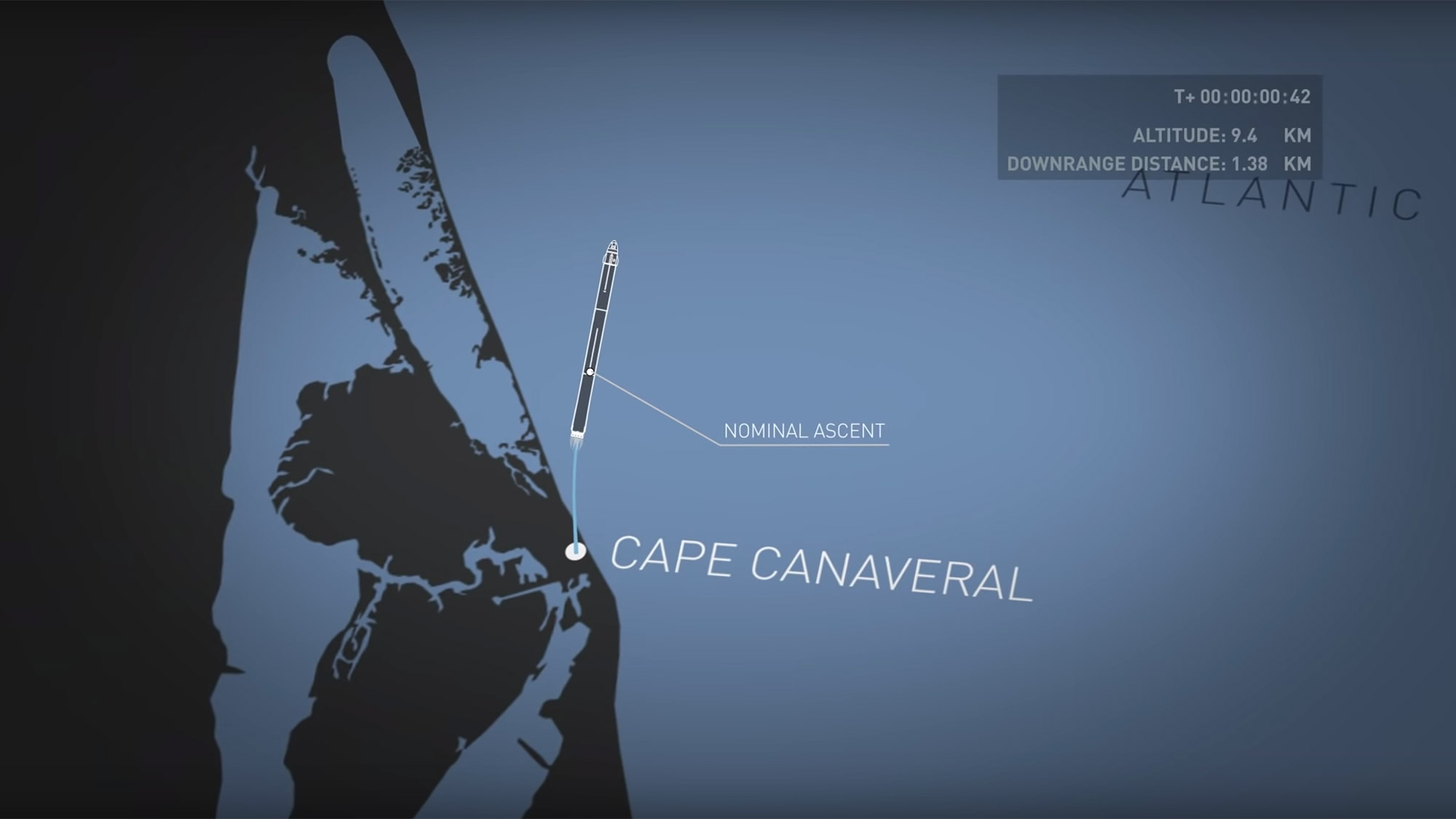
The Falcon 9 first-stage booster on this flight launched for the fourth time; the booster launched a satellite for Bangladesh in May 2018, an Indonesian satellite in August of that same year and then finally a set of 64 satellites in a rideshare mission in December 2018.
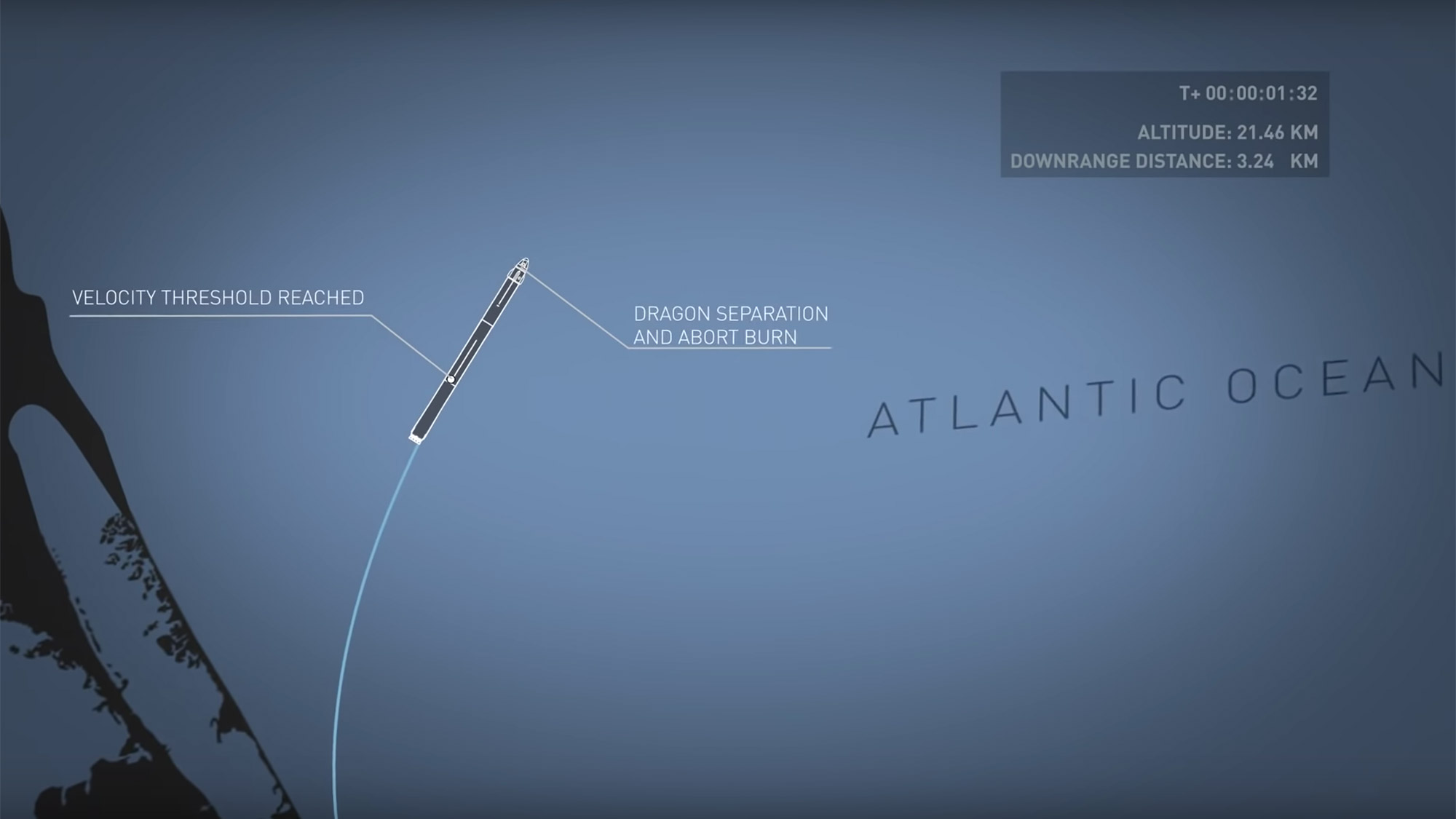
Precisely 84 seconds after liftoff, as the Falcon 9 rocket flew Mach 2.3, Crew Dragon fired its eight SuperDraco engines to rip itself free of the rocket's second stage.
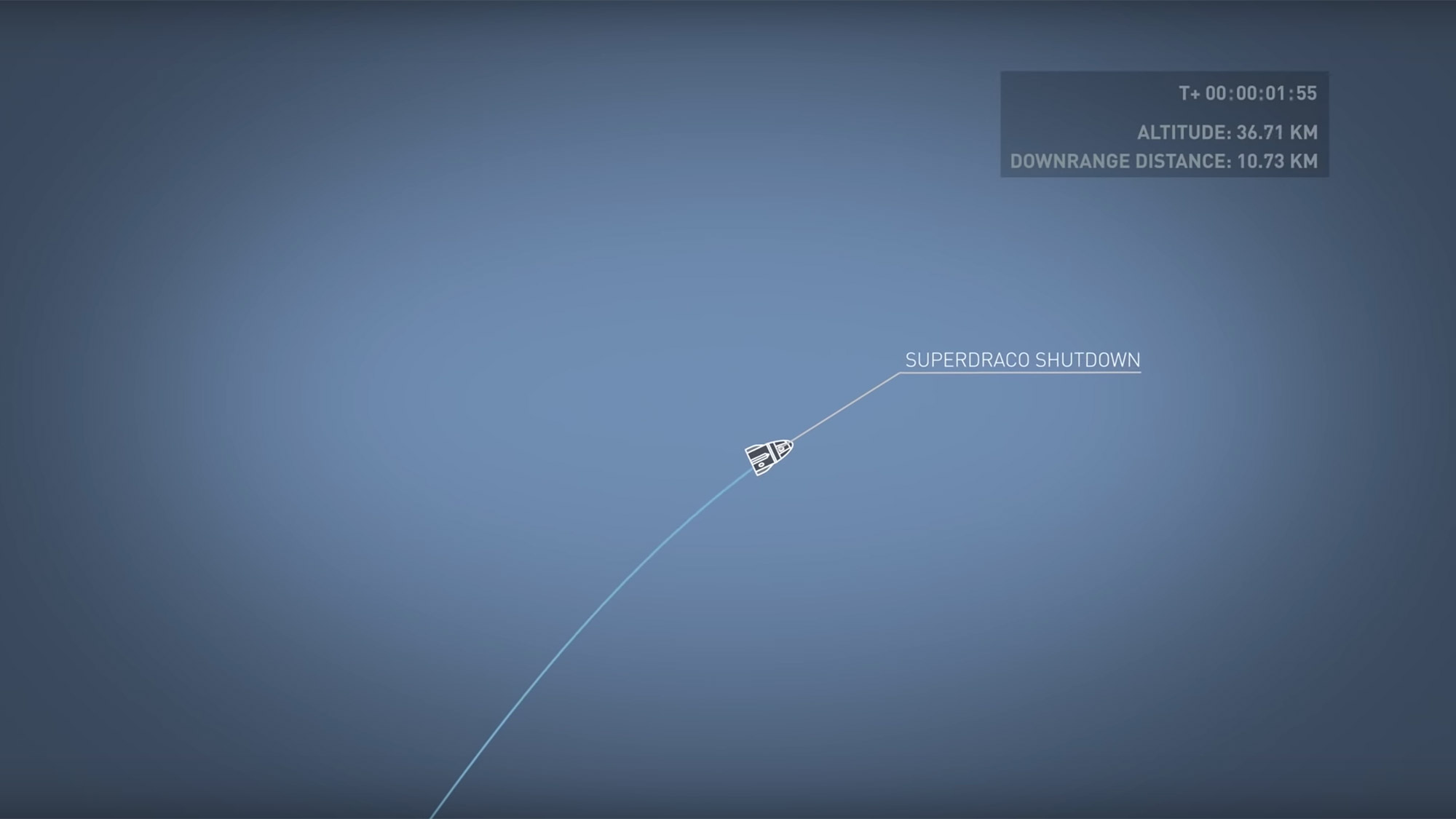
Crew Dragon's SuperDracos fired for 10 seconds, pulling the capsule free of the Falcon 9 and carrying the capsule upward on a suborbital trajectory.
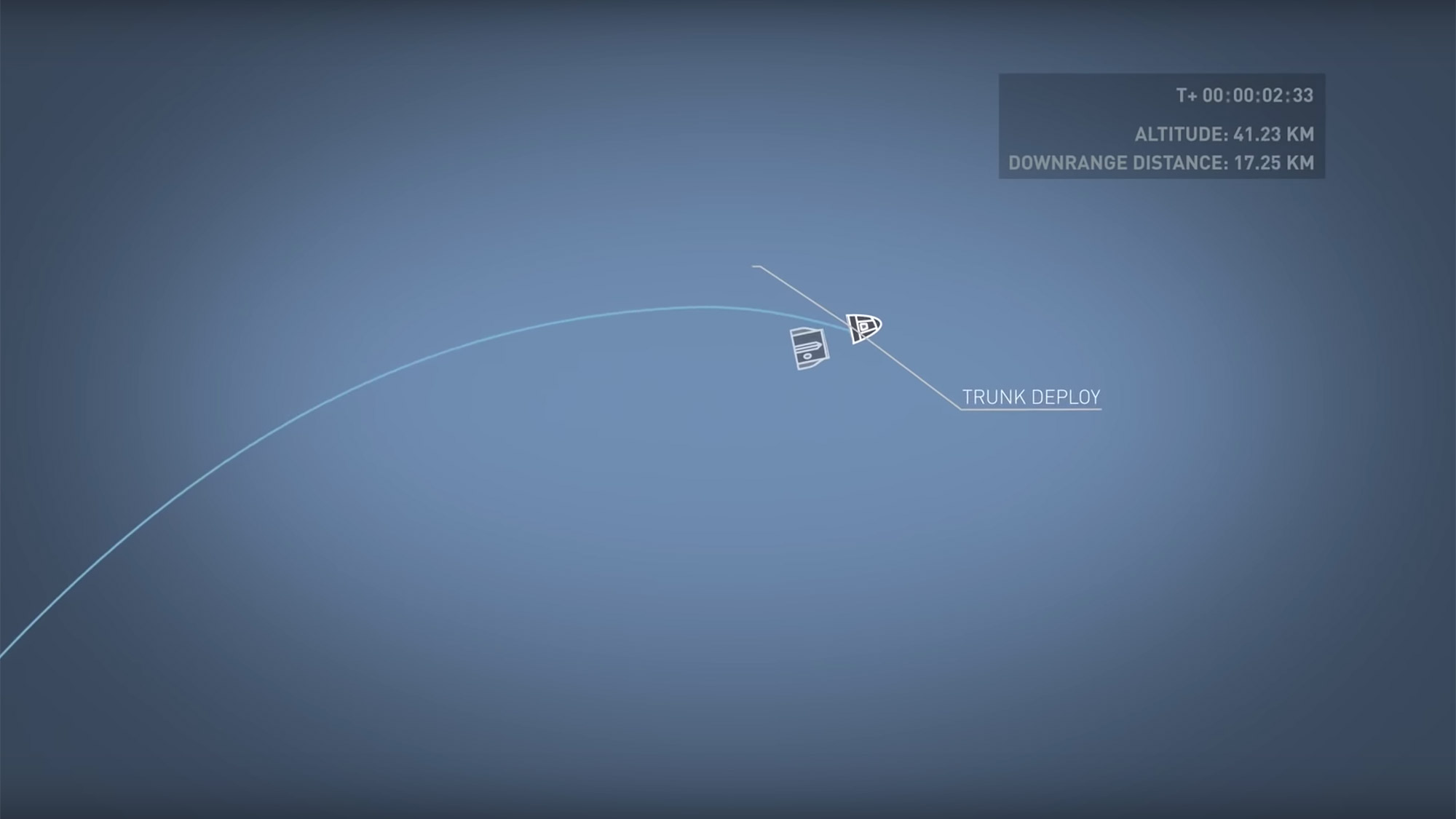
About 2.5 minutes after liftoff, Crew Dragon jettisoned its "trunk" service module. The cylindrical, finned module contains the solar arrays and other gear required to sustain Crew Dragon's taxi flights to the International Space Station for NASA.
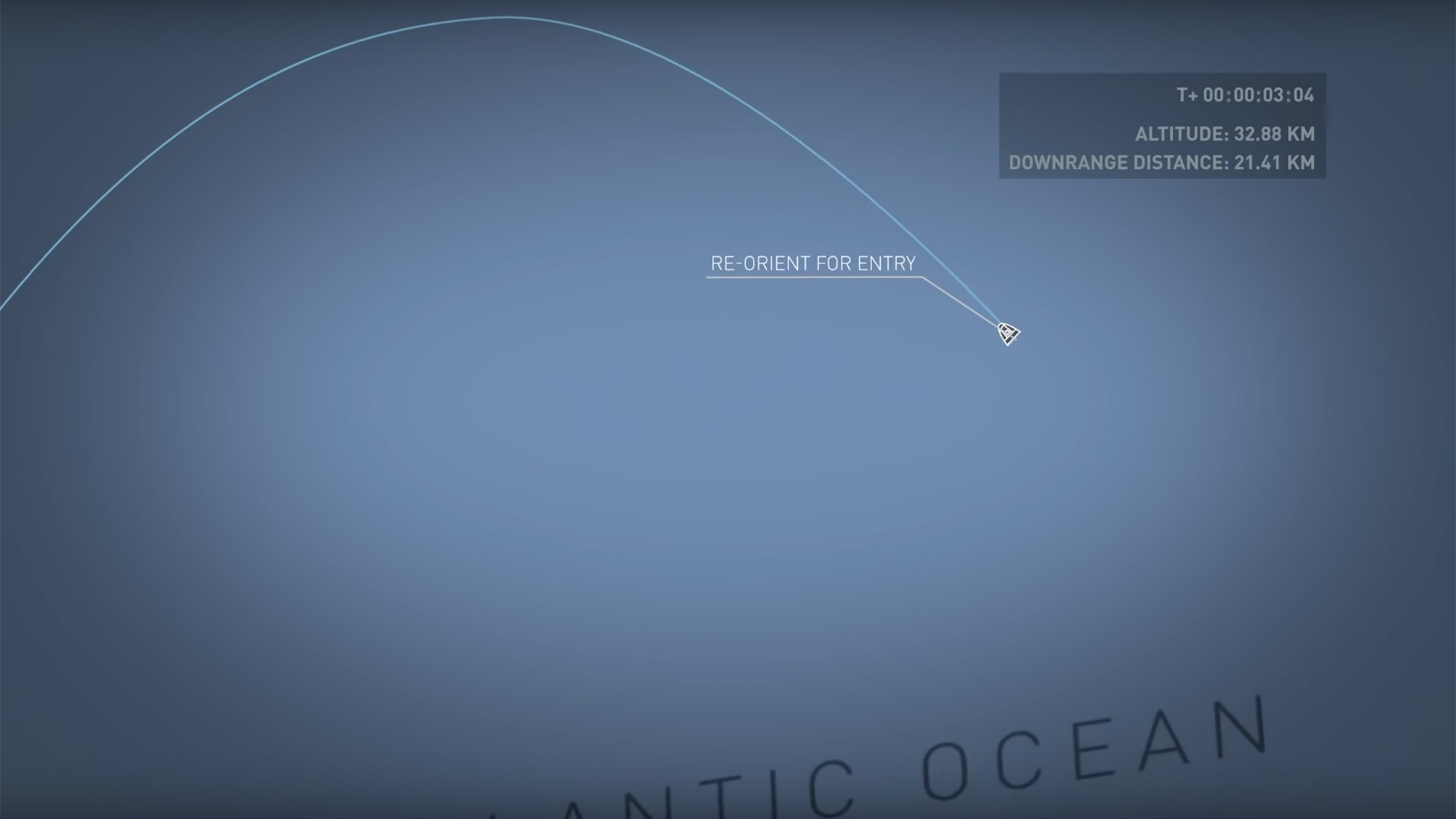
Just after the 3-minute mark, Crew Dragon fired its regular Draco thrusters to orient the space capsule for entry and splashdown. Crew Dragon did not reach space on this launch; the highest altitude the capsule reached is about 24.8 miles (40 km).
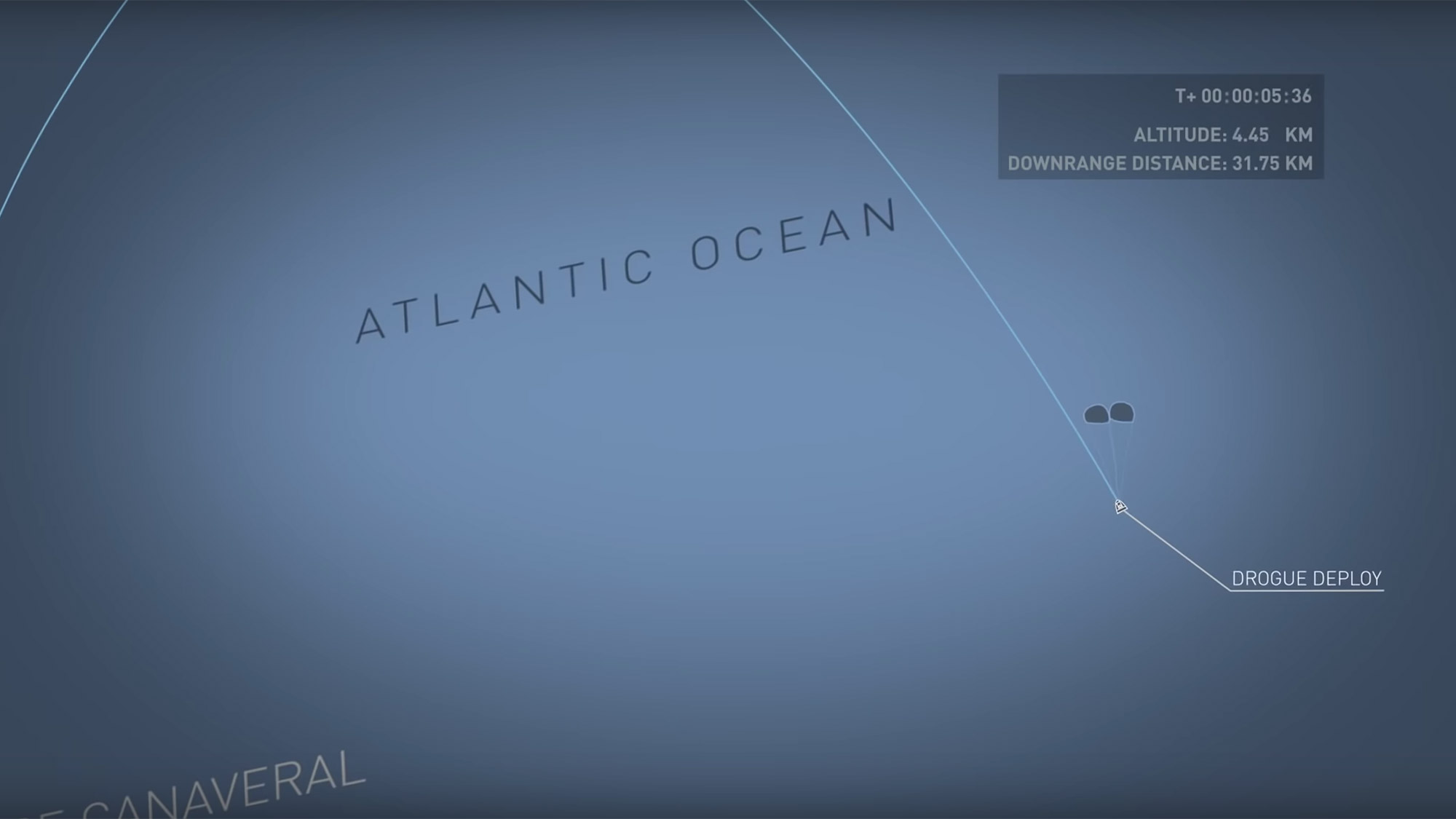
About 5.5 minutes after liftoff, Crew Dragon began releasing parachutes to slow itself for splashdown. First came the release of two drogue chutes to stabilize the capsule and prepare it for the release of its four main parachutes.
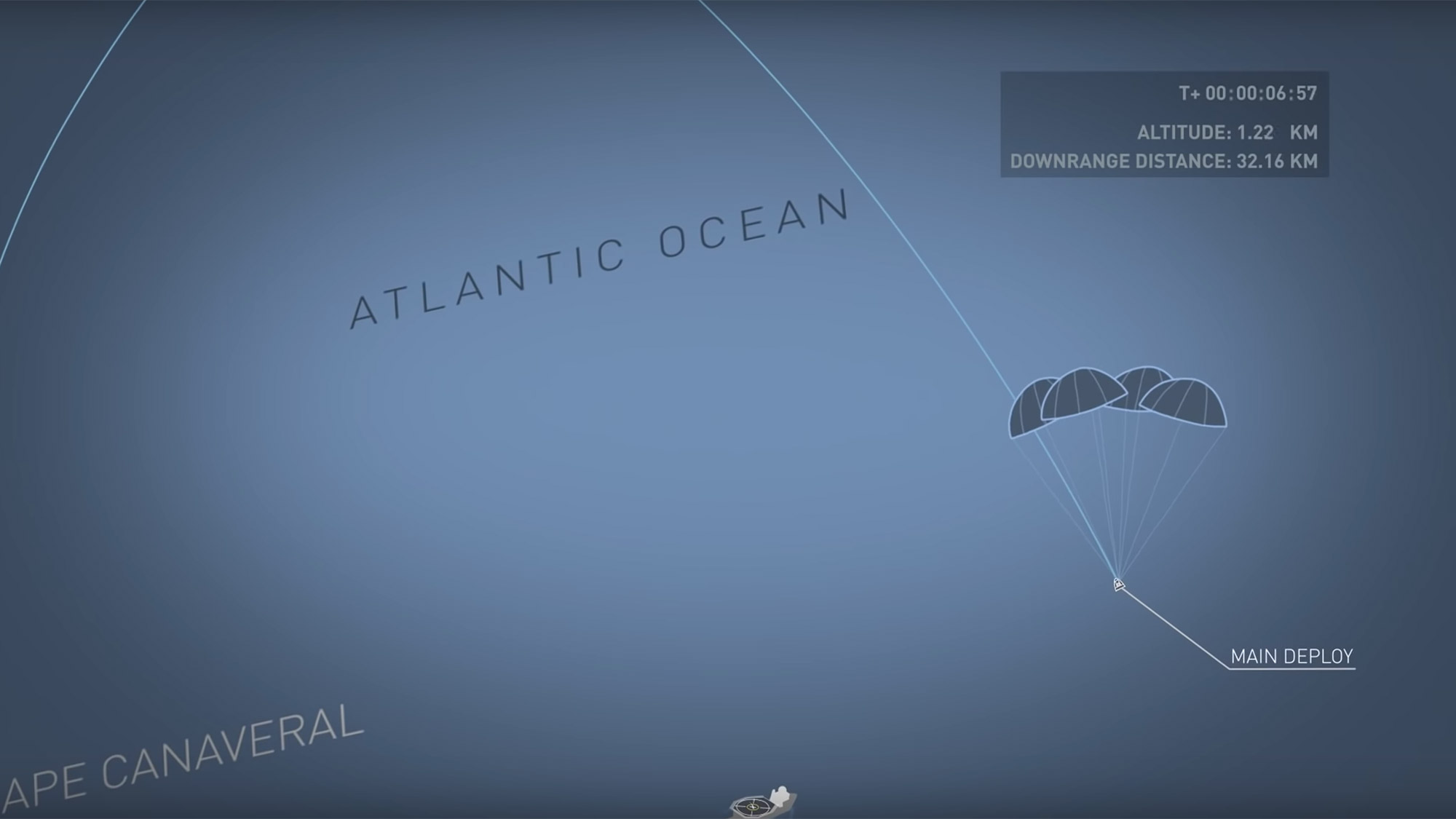
Shortly after the drogue chutes deployed, Crew Dragon released its four main parachutes to slow the spacecraft's descent ahead of splashdown. The parachutes on this Crew Dragon were SpaceX's newest version, the Mark 3 parachute design.
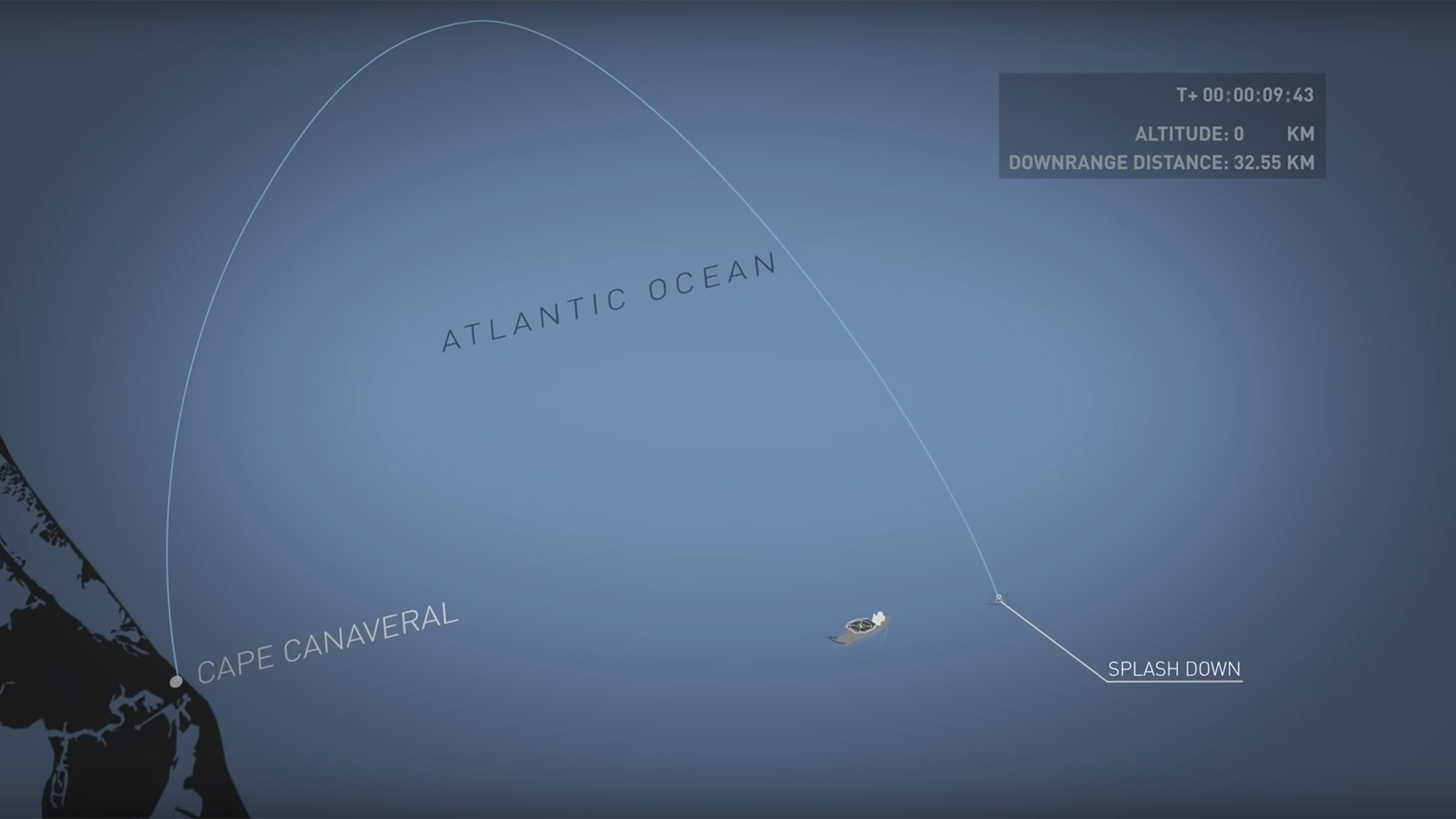
About 10 minutes after launch, Crew Dragon splashed down in the Atlantic Ocean. The drop zone was between 18 and 21 miles offshore (30-35 km). SpaceX's recovery ship, the GO Searcher, tracked the Crew Dragon ahead of its splashdown, setting the stage for the final step of the mission: Recovery.
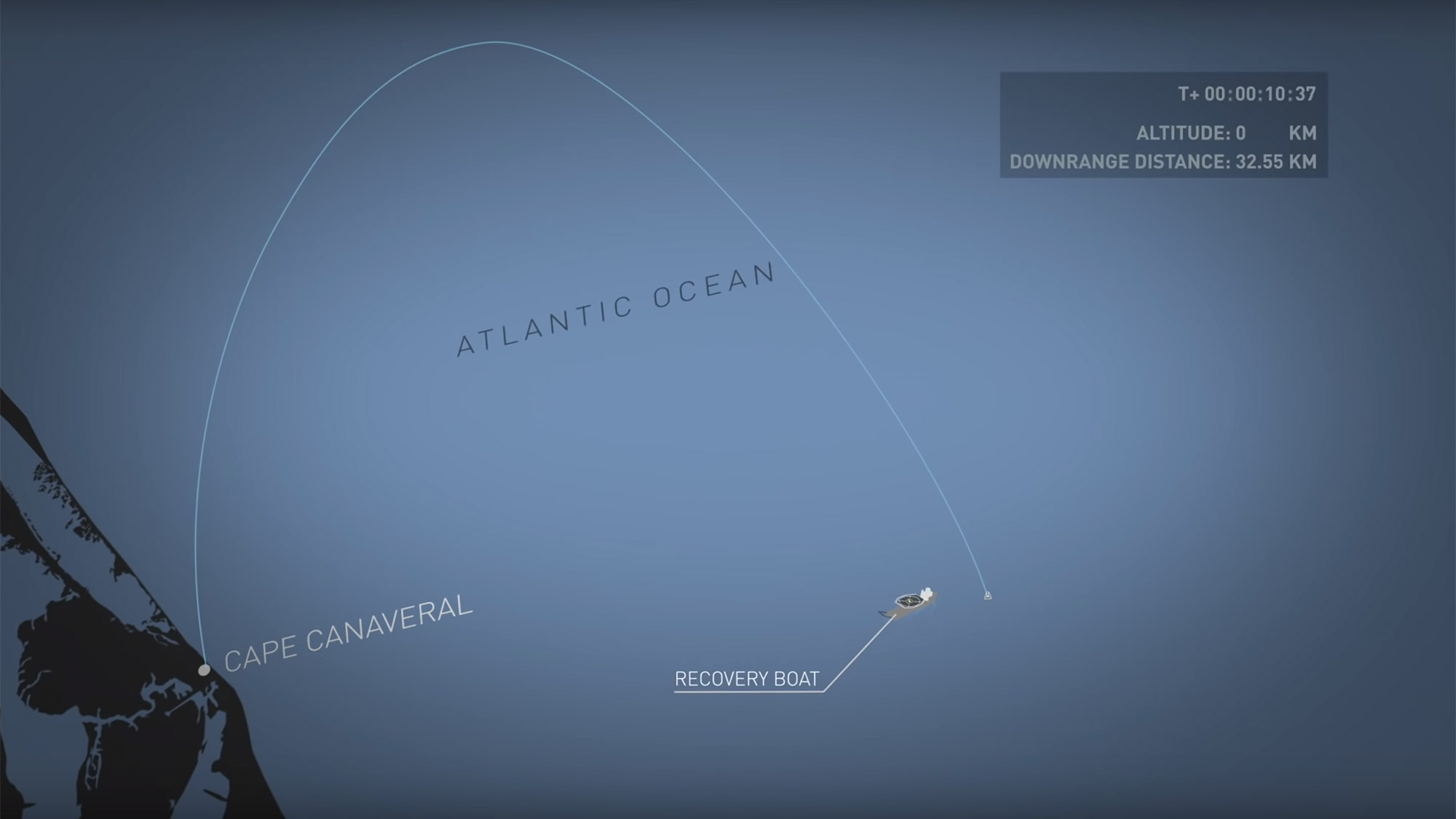
The GO Searcher was staged near the splashdown zone and was able to reach the Crew Dragon in a matter of minutes minutes. After recovering the Crew Dragon, the ship will return it to Cape Canaveral so it can be studied to see how it fared during the test.
This gallery was originally published Jan. 19 and updated Jan. 22.
- The emergency launch abort systems of SpaceX and Boeing explained
- SpaceX fires up rocket in prep for 1st astronaut launch with Crew Dragon
- SpaceX's Crew Dragon Demo-1 test flight in pictures
Follow us @Spacedotcom and Facebook.

Breaking space news, the latest updates on rocket launches, skywatching events and more!

Space.com is the premier source of space exploration, innovation and astronomy news, chronicling (and celebrating) humanity's ongoing expansion across the final frontier. Originally founded in 1999, Space.com is, and always has been, the passion of writers and editors who are space fans and also trained journalists. Our current news team consists of Editor-in-Chief Tariq Malik; Editor Hanneke Weitering, Senior Space Writer Mike Wall; Senior Writer Meghan Bartels; Senior Writer Chelsea Gohd, Senior Writer Tereza Pultarova and Staff Writer Alexander Cox, focusing on e-commerce. Senior Producer Steve Spaleta oversees our space videos, with Diana Whitcroft as our Social Media Editor.
